HyperCard
description: hypermedia system for Apple Macintosh and Apple IIGS computers
37 results

The Wikipedia Revolution: How a Bunch of Nobodies Created the World's Greatest Encyclopedia
by
Andrew Lih
Published 5 Jul 2010
Since the Web was not tied to one computer company or encumbered by patents, HTML could be generated and displayed by anyone who had the interest and skill to write a program to translate the codes to the computer screen. Most everything in HyperCard mapped quite well to HTML—text, italics, bold, images, and sounds. And while Ward Cunningham was finding HyperCard easy to use and to derive a prototype from, someone else was also discovering that HyperCard was useful. Viola Shipping HyperCard for free on Macs inspired a whole generation of programmers with the power of hypermedia, even if it didn’t generate any significant revenue for Apple. In 1989, University of California at Berkeley student Pei-Yan Wei played around with HyperCard and was impressed with Apple’s giveaway tool. “HyperCard was very compelling back then, you know graphically, this hyperlink thing, it was just not very global and it only worked on Mac . . . and I didn’t even have a Mac.”
…
Four days later, Wei emerged and announced to the World Wide Web community that he had made ViolaWWW.17 HyperCard was a product ahead of its time. And even though Apple stopped development and support for it, HyperCard’s influence would be much more profound. Its visual interface and hyperlinking were the inspiration for the first popular Web browser, and even twenty years later, after a dot-com boom and bust, people are still trying to replicate the simplicity and power of HyperCard. HyperCard Revisited In September 1987, HyperCard intrigued Cunningham, but his work at Tektronix would lead him to study how people design software, and he started to write about something called “pattern languages.”
…
It also did not help that the Macintosh, and by extension HyperCard, was an unconventional choice for the workplace in the 1980s. Apple Computer was locked in a bitter struggle for the desktop computer market with the likes of Intel and Microsoft. While HyperCard was incredibly powerful and critically acclaimed, Wiki_Origins_51 it was still considered a toy. There were good reasons for this label. HyperCard was designed around the original Macintosh black-and-white nine-inch screen, and was stuck with that small size for many years despite computer displays getting bigger and bigger. HyperCard was also an odd product for Apple to manage.
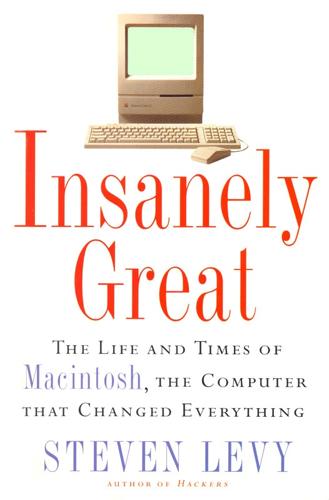
Insanely Great: The Life and Times of Macintosh, the Computer That Changed Everything
by
Steven Levy
Published 2 Feb 1994
So while thousands used the program to organize information, most of the millions of people owning HyperCard never bothered with HyperTalk. On the other hand, HyperCard's mere presence on millions of Macintoshes was a subtle yet profound cultural milestone. Before HyperCard, those interested in realizing the dreams of Vannevar Bush and Ted Nelson had formed a community that, despite ardent efforts to educate people to their vision, remained on the fringe. These hypertext adherents had been regarded in the same way that linguists treat the fervent proponents of Esperanto-cultists who may have a point to make, but whose cause is doomed. The appearance of HyperCard, the product with hypertext as its heart, changed all that.
…
He thought his program, which he called Wildcard, could be the ultimate organizer. As often happens in the computer industry, the proposed product name had been claimed by a previous company, and the program came to be known as HyperCard. (After observing the trademark battles in the computer industry for some years, I now envision the English language as a lexical Oklahoma Territory, each word waiting for a homesteader to stake a claim on it.) HyperCard was meant to occupy a central place in the world of Macintosh, a node from which would tumble all the weird facts, semiremembered appointments, and quickly jotted phone numbers that all too often had previously gotten lost in the shuffle of information clutter.
…
If you pressed the cursor on a hat, you would find other images on other cards appearing, linked by the visual concept of hats. Lurking behind that activity was an idea-that information could easily migrate across the boundaries of text, graphics, video, and sound. HyperCard was a primer for the digital age. So if I wanted to make a HyperCard "stack" of personal information, I might have a "home card" reading, ME. On it would be an array of buttons, ranging from ones labeled TIMELlNE, PEOPLE, WRITINGS, SCHEDULE, and other paths to branch from. Hitting the TIMELlNE button would bring a scroll bar from birth to the present; stopping at a given point would yield a year, say 1988.
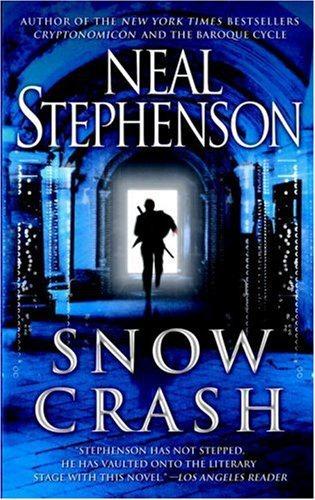
Snow Crash
by
Neal Stephenson
Published 15 Jul 2003
"You don't have to give me any money. Free sample. And you don't have to wait for no mail. You can have it now." He reaches into his pocket and pulls out a hypercard. It looks like a business card. The hypercard is an avatar of sorts. It is used in the Metaverse to represent a chunk of data. It might be text, audio, video, a still image, or any other information that can be represented digitally. Think of a baseball card, which carries a picture, some text, and some numerical data. A baseball hypercard could contain a highlight film of the player in action, shown in perfect high-def television; a complete biography, read by the player himself, in stereo digital sound; and a complete statistical database along with specialized software to help you look up the numbers you want.
…
A baseball hypercard could contain a highlight film of the player in action, shown in perfect high-def television; a complete biography, read by the player himself, in stereo digital sound; and a complete statistical database along with specialized software to help you look up the numbers you want. A hypercard can carry a virtually infinite amount of information. For all Hiro knows, this hypercard might contain all the books in the Library of Congress, or every episode of Hawaii Five-O that was ever filmed, or the complete recordings of Jimi Hendrix, or the 1950 Census. Or—more likely—a wide variety of nasty computer viruses. If Hiro reaches out and takes the hypercard, then the data it represents will be transferred from this guy's system into Hiro's computer. Hiro, naturally, wouldn't touch it under any circumstances, any more than you would take a free syringe from a stranger in Times Square and jab it into your neck.
…
Then she pulls a hypercard out of her pocket. "Here. Take this." As Hiro pulls it from her hand, the hypercard changes from a jittery two-dimensional figment into a realistic, cream-colored, finely textured piece of stationery. Printed across its face in glossy black ink is a pair of words BABEL INFOPOCALYPSE The world freezes and grows dim for a second. The Black Sun loses its smooth animation and begins to move in fuzzy stop-action. Clearly, his computer has just taken a major hit; all of its circuits are busy processing a huge bolus of data—the contents of the hypercard—and don't have time to redraw the image of The Black Sun in its full, breathtaking fidelity.
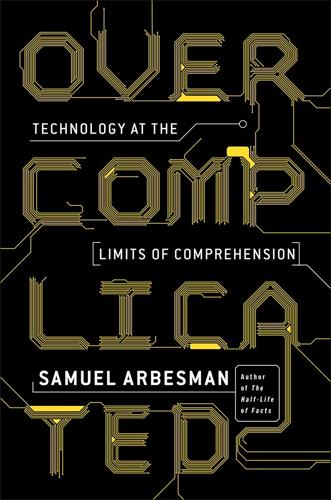
Overcomplicated: Technology at the Limits of Comprehension
by
Samuel Arbesman
Published 18 Jul 2016
We see this trend continuing even today with the iPad, so slick and pristine that I don’t even know how files in it are stored. However, I had HyperCard for our Mac. HyperCard was this strange combination of programming language and exploratory environment. You could create virtual cards, stitch them together, and add buttons and icons that had specific functionality. You could make fun animations and cool sounds and even connect to other cards. If you’ve ever played the classic game Myst, it was originally developed using HyperCard. HyperCard was like a prototypical series of web pages that all lived on your own computer, but it could also do pretty much anything else you wanted.
…
For a kid who was beginning to explore computers, this visual authoring space was the perfect gateway to the machine. One program I built with HyperCard was a rudimentary password generator: it could make a random string you could use as a password, but it also had options to make the random passwords more pronounceable, and hence more memorable over the long term. It was simple, but definitely ahead of its time, in my unstudied opinion. The computer game designer Chaim Gingold calls gateways like HyperCard “magic crayons.” Like the crayon in the children’s book Harold and the Purple Crayon that allows the young hero to draw objects that immediately take on reality, magic crayons are tools that, in Gingold’s words, “allow non-programmers to engage the procedural qualities of the digital medium and build dynamic things.”
…
Like the crayon in the children’s book Harold and the Purple Crayon that allows the young hero to draw objects that immediately take on reality, magic crayons are tools that, in Gingold’s words, “allow non-programmers to engage the procedural qualities of the digital medium and build dynamic things.” Even in the Apple world, commonly viewed as sterilized of messy code and computational innards, HyperCard allowed access to the complex powerhouse of the digital domain. HyperCard provided me with the comfort to enter this world, giving me a hint of the possibilities of working under the hood. All complex systems that we interact with have different levels that we can examine, created in technology by the deliberate abstractions we construct and in nature by the abstracting powers of scale and evolution.

Memory Machines: The Evolution of Hypertext
by
Belinda Barnet
Published 14 Jul 2013
I could have included several others from that period – most obviously NoteCards, Office Workstations Limited’s Guide, KMS, Microcosm, or Apple’s very popular HyperCard program released in 1987. The latter systems were all commercialized in some form, but HyperCard was the most successful, largely because it was bundled free with every Macintosh sold after 1987 (Nielsen 1995). HyperCard is the elephant in the pre-Web hypertext room; it popularized hypermedia before the Web and introduced the concept of linking to the general public. In some media accounts, one could be forgiven for thinking there was no hypertext before HyperCard (as New Scientist’s Helen Knight implies in her piece on pre-Web hypertext, ‘The Missing Link’ (2012, 45)).
…
In some media accounts, one could be forgiven for thinking there was no hypertext before HyperCard (as New Scientist’s Helen Knight implies in her piece on pre-Web hypertext, ‘The Missing Link’ (2012, 45)). Actually computer-based hypertext had been around for twenty years before HyperCard, and the systems we will explore in this book were all built (or imagined) well before its release in 1987. If I had another ten thousand words to play with, I would include a chapter on Microcosm and Professor Dame Wendy Hall. Microcosm was a commercial application, but it deserves a mention here because it was also the harbinger of a new era: network culture. Microcosm was a pioneering open-linking service designed to deal with large-scale distributed hypertexts and (unlike Intermedia or Storyspace, for that matter, which still arguably belongs to an earlier era) it was quickly incorporated into the Web.
…
Some were not – including Judy Malloy’s beautiful ‘narrabase’ programs that generated stories that changed each time you read them, by randomizing retrieval from a database (the most famous of these is Uncle Roger (1986), available on the Web).11 We might also include here John McDaid’s Uncle Buddy’s Phantom Funhouse, which was produced in Hypercard (1992). This also makes use of a navigational ‘map’ and topographic metaphor. Both Malloy’s and McDaid’s work remarkably prefigure the movement in contemporary e-literature toward what Victoria Vesna, following Lev Manovich, calls ‘database aesthetics’ (Vesna 2007, 234).12 Those hypertexts that were written in Storyspace had a strange ‘preoccupation with the “topography” of hypertext’ (Ciccoricco 2007, 197).
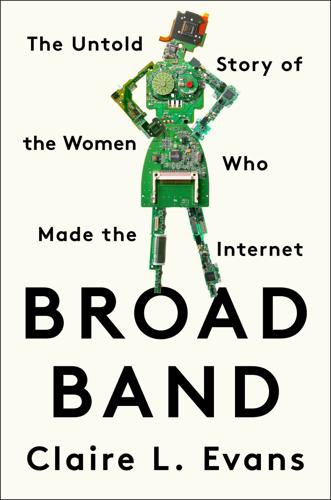
Broad Band: The Untold Story of the Women Who Made the Internet
by
Claire L. Evans
Published 6 Mar 2018
Installed on all the campus workstations, NoteCards became a vital tool for sharing ideas across disciplines, and its influence flowed beyond PARC’s borders. In 1987, Apple released a NoteCards–like application, HyperCard, which came bundled with Apple Macintosh and Apple IIGS computers and became the most popular hypermedia system ever developed before the advent of the World Wide Web. People used it to build databases, write branching novels, and create PowerPoint–like presentation slides. Popular games, like the bestselling CD-ROM Myst, were prototyped in HyperCard. Within Apple, it was often used to test out interface design ideas, and some publishers even issued magazines as HyperCard “stacks.” Nineteen eighty-seven was a banner year for hypertext, as it happens.
…
Presper “Pres,” 40–42, 45–46, 49, 51, 55, 57, 79 Eckert-Mauchly Computer Corporation (EMCC), 55–63, 73 e-commerce, 216–17 commercialization of Web, 204–5, 217, 241 see also advertising Ecos, 104 Edison, Thomas, 35 Einstein, Albert, 36 Eisenberg, Rebecca, 234 Eisenhower, Dwight, 60 Electronic Hollywood (company), 195–99, 201 Electronic Hollywood (magazine), 183–86 electronic publishing, 184, 186, 188, 201–3 Cyber Rag, 182–85, 183, 188, 195 Electronic Hollywood, 183–86 Suck.com, 194, 201–2 Women’s WIRE and, 211–13 Word, 188–95, 201–3, 205, 214, 215 e-mail, 110, 116, 121, 130, 137, 170, 179 Embraceable Ewe, 142, 144 EMCC (Eckert-Mauchly Computer Corporation), 55–63, 73 Engelbart, Douglas, 111–12, 115, 154, 210 engineering, 77, 124 software, use of term, 77–78, 93 ENIAC (Electronic Numerical Integrator and Computer), 38–52, 45, 54–56, 66, 79 programming of, 44–52, 79 toy, 223–24 unveiling of, 47–51 ENIAC Six, 39–52, 54, 55 Ensmenger, Nathan, 78 Esquire, 184 Ethernet, 126, 128 Evans, Nancy, 219 Facebook, 139, 141, 148, 149, 151, 210 Faraday, Michael, 16 Farm, The, 132–33 Farnsworth, Philo, 41 Feinler, Elizabeth “Jake,” 111–24, 114, 129, 154, 166, 210, 242 Felsenstein, Lee, 99, 101–4 feminism, 205, 217, 221, 233, 235, 239 cyberfeminism, 237–42 Women’s WIRE and, 207–8 FidoNet, 131 First Cyberfeminist International, 240 FitzNeal, Richard, 155–56 Fleming, Williamina, 23 Flint Ridge, 84–85 FLOW-MATIC, 69, 70 FORTRAN, 70, 88, 89, 93 404 Errors, 170, 171 FreeNets, 131 FuckedCompany.com, 218–19 games, see computer games Gandhi, Mahatma, 160 garbage in, garbage out, 100 Garmisch, 77 Garrubbo, Gina, 213–15, 217 Glazer, Avram, 194 Glenn, John, 24 Goldstine, Adele, 47–48, 51 Goldstine, Herman, 41, 44, 47–48, 51 Google, 115, 154, 215 Gore, Al, 136, 146 Gorn, Saul, 69 Grateful Dead, 102, 133, 134, 140, 180 Grier, David Alan, 24 hackers, 98, 101, 102, 106, 108, 116, 118, 124, 185 Hacker’s Dictionary, The (Steele, ed.), 72 Haight-Ashbury Switchboard, 97 Hall, Wendy, 155–61, 160, 165, 167, 168, 169–174 Hanson, Pete, 85 Hardt-English, Pam, 96–101, 103–4 hardware, 33, 38–39, 44–45, 51–52, 64, 66, 69, 71, 73, 74, 76–77, 79, 80, 177 Harrenstein, Ken, 114–15 Harris, Josh, 187, 199 Harvard Computers, 23 Harvard University, 10, 54, 153 Computation Laboratory, 34–36, 54, 57–58 Hopper at, 31–37, 54, 56, 58, 63, 117 Mark I computer, 18, 31–39, 46, 59, 79 Mark II computer, 34, 38, 54, 79 Hawes, Mary, 69, 70 Haystack Radio Observatory, 93 Hearst Communications, 217, 220 Her Interactive, 233 Hewlett-Packard, 167 High Performance Computing Act, 136–37 Hitchhiker’s Guide to the Galaxy, The (Adams), 171, 174 Hofstadter, Douglas, 67 Holberton, Elizabeth “Betty” (née Snyder), 39, 43, 44, 47–49, 51, 53, 56–62, 68, 70, 73, 98, 108, 125 Honeywell, 73, 86, 93, 96 Hopper, Grace, 27–40, 30, 44, 46, 52, 53–55, 56, 57–60, 63, 64–74, 75–76, 78, 80, 93, 98, 101, 108, 119, 242 at EMCC, 56–59 at Harvard, 31–37, 54, 56, 58, 63, 117 in navy, 29–31, 75 Hopper, Vincent, 27–29, 54 Horn, Stacy, 134–42, 144–52, 147, 180–81, 202–3, 209, 242 hosts, 113, 118 addresses of, 120–21 ARPANET Host Table, 113, 114, 120 domains and, 120–21 HTML (Hypertext Markup Language), 154, 196 HyperCard, 165, 168, 169, 183, 184 hypertext, 153–74, 177, 186, 203, 222 conferences on, 165, 167–69 HyperCard and, 165, 168, 169, 183, 184 Microcosm and, 159–61, 160, 164, 167, 168, 170–74 NoteCards and, 164–66, 168, 170 World Wide Web and, 168–70, 201 Hypertext Markup Language (HTML), 154, 196 IBM, 64, 65, 69, 73, 75, 79, 161, 186, 197 EMCC and, 60 ENIAC and, 43, 44 Mark I and, 32–34 OS/360 and, 76 Icon CMT, 188, 189, 193 identity and, 143–44 Idol, Billy, 185–86, 188 Industrial Revolution, 12 information, 25, 121, 122, 161 packets of, 110, 126, 202 information superhighway, 136–37, 146, 151 Instagram, 139, 149 Intel, 124 Interface Message Processor (IMP), 86–87 Intermedia, 162, 170 Internet, 93, 96, 99, 100, 109–10, 115–18, 121, 122, 127, 129, 131, 133, 135, 139, 145, 151, 153–54, 177, 189, 190, 202, 204, 222 addresses, 113–14, 120–21 ARPANET and, see ARPANET browsers, see browsers cyberfeminism and, 238–42 domains, 120–21 dot-com bubble and, see dot-com bubble egalitarian vision of, 119, 212 e-mail, 110, 116, 130, 170 High Performance Computing Act and, 136–37 identity and, 143–44 misogyny and violence on, 240–41 see also World Wide Web Internet Explorer, 172 Internet Hall of Fame, 118 Interval Research, 227–29, 231, 235 iVillage, 214, 216–21 Jacquard, Joseph-Marie, 12 Jacquard loom, 12–13, 20 Janowitz, Mary, 104–7 Jargon File, 71–72 Jennings, Betty Jean, 39, 40, 43–52, 45, 53, 56, 57, 59, 61, 62 Johnson, Katherine, 24–25 Joyce, James, 154 Karp, Peggy, 114 Kay, Alan, 226 Kennedy, John F., Jr., 137 Kidd, Alison, 166–67 Kilmer, Joyce, 127 kilogirls, 11, 24, 70, 80 Klein, Renate, 240 Knapp, Sue, 73 Koss, Adele Mildred, 73 Kretchmar, Laurie, 213, 217 LambdaMOO, 143 Langley Research Center, 24–25 Laurel, Brenda, 223–36 Laybourne, Geraldine, 216 Learning Company, The, 233, 235 Leary, Timothy, 226 Lefkowitz, Joan, 105–7 Leopold’s, 101, 130 Levi’s, 214, 215 Levy, Jaime, 181–93, 183, 185, 195–203, 242 Levy, Steven, 91 Lichterman, Ruth, 39, 40, 43, 48, 49 Liebowitz, Annie, 99 Life on the Screen (Turkle), 229 Light, Jennifer S., 50 links, 161, 168 anchor, 162 dead, 170–72, 174, 201 metadata and, 159, 174 Microcosm and, 159–61, 160, 164, 167, 168, 170–74 on World Wide Web, 168–70 Lipkin, Ephrem, 98, 101, 102 Longest Cave, The (Brucker and Watson), 88 looms, 11–13, 20 Los Angeles, Calif., 129–30 Lost Illusions (Balzac), 200 Lovelace, Ada, 13–24, 15, 42, 52, 74, 80, 238, 242 Ludd, Ned, 12 Luddites, 12 Macie, Chris, 96–98, 104, 105 magazines, online, see electronic publishing magnetic tape, 60–62, 79, 110 Malloy, Judy, 164 Mammoth Cave, 83–88, 90–92 Manhattan Project, 10, 36 Margolis, Jane, 222 Mariner I, 76 Mark I computer, 18, 31–39, 46, 59, 79 Mark II computer, 34, 38, 54, 79 Marshall, Cathy, 162–70, 173 mathematics, mathematicians, 9–14, 16–18, 20–22, 24, 25, 32, 34, 36, 37, 39, 66, 67, 157 MATH-MATIC, 69 Mattel, 230, 233–35 Mauchly, John, 40–43, 45–46, 48, 49, 51, 55–57, 79 Eckert-Mauchly Computer Corporation (EMCC), 55–63, 73 Maupassant, Guy de, 200 McDaniel, Marleen, 210–14, 216, 217, 219–20 McNulty, Kathleen “Kay,” 39, 42, 43, 49, 56 Media Metrix, 217, 220 Menabrea, L.
…
Nineteen eighty-seven was a banner year for hypertext, as it happens. Beyond the release of HyperCard, it marked the first academic hypertext conference, Hypertext ’87, in Chapel Hill, North Carolina. Academic conferences of this type can forge intellectual communities out of atomized researchers, and this is what happened in North Carolina. Twice as many delegates as expected showed up, leading one attendee to observe a “rueful sense that this was the last time any hypertext gathering will be of manageable size.” It was a heady mix, unusual for a technical conference, due largely to hypertext’s many possibilities in the humanities: computer scientists rubbed elbows with classicists, professors with entrepreneurs.

This Is for Everyone: The Captivating Memoir From the Inventor of the World Wide Web
by
Tim Berners-Lee
Published 8 Sep 2025
Hypertext gained widespread popularity in 1987, when Bill Atkinson, a programmer at Apple, released HyperCard, a ‘stack’ of virtual ‘cards’ that organized text, images and multimedia objects in a manner that resembles a modern web page. The cards weren’t organized in a hierarchical way, and you could jump from one card to any other. (This was the kind of ‘illogical’ conceptual leap that computer programmers sometimes struggled with; Atkinson had conceived of HyperCard while on acid.) HyperCard was a massive hit. Apple bundled it as a default app with Macintosh computers, and a community of HyperCard enthusiasts grew around it. • So there is your potted history of hypertext – except at the time I was almost totally unaware of these developments!
…
• So there is your potted history of hypertext – except at the time I was almost totally unaware of these developments! When I was conceptualizing the web as an information-wrangling tool, I had never heard of Ted Nelson nor Douglas Engelbart, and I had never used HyperCard. My introduction to hypertext only came while I was drafting a proposal for my document-linking system, when someone – I cannot remember who, but probably my CERN colleague Robert Cailliau – shared with me the July 1988 edition of the journal Transactions on Computer Systems, produced by the Association for Computing Machinery (ACM). Entitled Hypertext on Hypertext, the edition was electronic, delivered via floppy disk, and ran as its own executable program.
…
So I encouraged the development of an ecosystem of browsers, and several developers took up the challenge. This was the beginning of a long and, indeed, ongoing series of ‘browser wars’. The first developer to take the web browser seriously was Pei-Yuan Wei, a computer science student at UC-Berkeley. Pei Wei had independently been thinking along the same lines, looking to use Viola, his own HyperCard-like system, as a platform for networked computing. Then he stumbled across my alt.hypertext Usenet post from August 1991. He recognized the importance of the hyperlink, and in December 1991 he sent me a line, telling me he was thinking of developing a browser for the Unix-based X Window system, a free and open-source graphical interface.

Valley of Genius: The Uncensored History of Silicon Valley (As Told by the Hackers, Founders, and Freaks Who Made It Boom)
by
Adam Fisher
Published 9 Jul 2018
Andy Hertzfeld: Alan Kay was my hero. I was like Damn! But it was still time for me to quit. Larry Tesler: And then as the program expanded and it even included a person who was not an engineer—Kristina Hooper Woolsey. Kristina Woolsey: I came in ’85 when the HyperCard stuff started. Bill Atkinson spontaneously decided to do the product. He and a small team just popped this thing out. Al Alcorn: HyperCard was developed by Bill and two or three guys in Advanced Technology and—it wasn’t supposed to be released. Products are supposed to be released by Product Development, not by Advanced Technology, understand? But Gassée, who succeeded Jobs as head of Macintosh development, wasn’t going to have it.
…
Fabrice Florin: Bill described this vision for enabling people to browse through nodes of information and jump from one node of information to another so they could learn by association, through serendipity, and be able to click on hyperlinks and just jump from one piece of information to another. It was based on the same concepts of hypertext that Ted Nelson and Doug Engelbart had been talking about for decades before. We all sit on the shoulders of giants. We’re all inspired by these ideas. Bill Atkinson: I viewed what was later called HyperCard as being a software erector set—where you could plug together prefab pieces and make your own software. Kristina Woolsey: It was basically a way to take your personal documents and link them together. Just remember, when the Macintosh came out, it had an object on it that no one had ever seen. Nineteen eighty-four is when the mouse was something you could buy on a machine.
…
Nineteen eighty-four is when the mouse was something you could buy on a machine. And the mouse and linking go together. If you have a pointing device, linking is a natural piece. You can click on this, click on that. Fundamentally the mouse and linking are the same. Bill Atkinson: Looking back, I sort of see that HyperCard was kind of like the first glimmer of a web browser—but chained to a hard drive. Fabrice Florin: Then immediately after the group discussion people went downstairs. We had lots of tables and computers. It started looking more like a hackathon, which back then was a novel concept. It probably came out of this Hackers Conference.
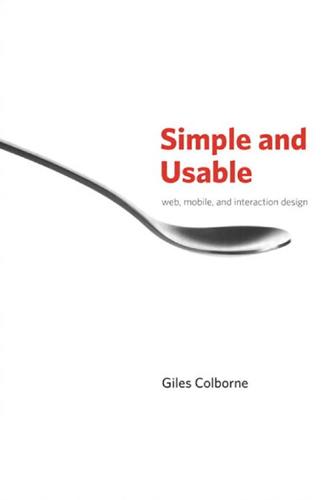
Simple and Usable Web, Mobile, and Interaction Design
by
Giles Colborne
Published 14 Sep 2010
rganize Download from WoweBook.com Before After Download from WoweBook.com Size and location When you’re laying out items on your grid, here are some tips for size and positioning. Make important things big, even if that means making them out of scale. The illustration opposite is similar to one featured in one of the first books on interface design I read—Apple’s HyperCard Stack Design Guidelines. If you’re designing a sports news website, then making the golf ball as large as the soccer ball may not be accurate, but the alternative would be to make it look as though the Masters was less important than MLS. Sports fans can debate that, but sports editors would prefer to give them equal prominence.
…
Watson Page 35, Photo courtesy iStockphoto, © Matthew Porter, Image 3391573 Page 37, Photo courtesy iStockphoto, © Michael Lok, Image 527184 Page 39, Photo courtesy iStockphoto, © Ola Dusegård, Image 11068369 Page 41, Photo courtesy iStockphoto, © Narvikk, Image 5521746 Page 43, Photo courtesy iStockphoto, © Quavondo, Image 8223968 Page 45, Photo courtesy iStockphoto, © Andrew Johnson, Image 7315616 Page 47, Photo courtesy iStockphoto, © Muhammet Göktas, Image 7038165 Page 49, Photo courtesy iStockphoto, © Joshua Hodge Photography, Image 12818260 Page 51, Photo courtesy Ben Stanfield Page 53, Photo courtesy iStockphoto, © Santa Maria Studio, Image 11326374 P H OTO C R E D I T S • 187 Download from WoweBook.com Part 4 Remove Page 67, Photo courtesy iStockphoto, © Grigory Bibikov, Image 10362465 Page 69, Photo Copyright Virgin Media Page 71, Photo courtesy iStockphoto, © Jami Garrison, Image 2252631 Page 73, Photo courtesy iStockphoto, © MBPHOTO, INC., Image 918432 Page 79, Photo courtesy iStockphoto, © Mark Wragg, Image 13558859 Page 81, Photo courtesy iStockphoto, © tolgakolcak, Image 7265127 Page 83, Photo courtesy iStockphoto, © Peter Garbet, Image 5742149 Page 87, Photo courtesy iStockphoto, © Conrad Lottenbach, Image 3131848 Page 101, Photo courtesy iStockphoto, © mphotoi, Image 3431237 Page 103, Photo thanks to DDB UK; Illustrator: Pete Mould Page 105, Photo: Ray Yuen Page 109, Photo courtesy iStockphoto, © malerapaso, Image 12566021 (picture frame) Page 109, Photo courtesy iStockphoto, © wsfurlan, Image 8528913 (mobile phone) Part 5 Organize Page 115, Photo courtesy iStockphoto, © PLAINVIEW, Image 13334346 Page 123, Photo courtesy iStockphoto, © Luis Santana, Image 2329511 Page 125, Photo courtesy iStockphoto, © Thomas Arbour, Image 12878280 Page 129, Photo courtesy iStockphoto, © Anna Yu, Image 8162485 (basketball) Page 129, Photo courtesy iStockphoto, © Matteo Rinaldi, Image 12117545 (golf ball) Page 129, Photo courtesy iStockphoto, © Tomasz Pietryszek, Image 12133382 (tennis ball) Page 129, Photo courtesy iStockphoto, © Chris Scredon, Image 7337356 (soccer ball) Page 131, Photo: Copyright Transport for London Page 133, Photo: Copyright Adam Wilson Page 135, Photo thanks to Andrew Skudder Part 6 Hide Page 149, Photo courtesy iStockphoto, © James Pauls, Image 3098674 Page 155, Photo courtesy iStockphoto, © Steve Harmon, Image 1035401 Page 157, Photo courtesy iStockphoto, © Alina555, Image 4716967 redits Download from WoweBook.com Part 7 Displace Page 165, Photo courtesy iStockphoto, © Matt Jeacock, Image 9316437 Page 169, Photo courtesy iStockphoto, © Neustockimages, Image 7418248 Page 171, Photo courtesy Honda PR Page 173, Photo courtesy iStockphoto, © Matt Jeacock, Image 13726223 Page 177, Photo courtesy iStockphoto, © René Mansi, Image 184532 Part 8 Before we go Page 181, Photo © Ricky Leong Page 185, Photo courtesy iStockphoto, © Matt Jeacock, Image 12394740 P H OTO C R E D I T S • 189 Download from WoweBook.com This page intentionally left blank Download from WoweBook.com Index A C Adaptive Path, 14 Caddick, Richard, 84 Adobe Illustrator, 152–153 camcorders, Flip, 40 Amazon online checkout page, 94 shopping flexibility, 170 Apple autofocus feature, 180 focus capturing moments, 184 on most used features, 112 Apple Store, Tokyo, 104–105 recording and sharing, 36 data detectors, 175 simplicity of design, 4–5 HyperCard Stack Design Guidelines, 128 user experience description, 38 cameras, SLR digital cameras, 24 iPhone Cavalcanti, Mariana, 106 description, 46 character of simple products, 10 focusing camera, 180 Colville, Alan, 52, 68 original features, 64 Comic Life app, 154 RunKeeper app, 162–163, 176 complexity Things app, 32–34 conservation of, 180 iPod, 26, 180 versus effectiveness, 12–13 iTunes, 122 intranets, managers versus salespeople, 8 Macintosh, 154, 180 Safari web browser, 88–89 website’s Tech Specs, 152 versus simplicity, installing printers, 2–3 unsustainability, 6 B Basecamp (37signals), 64 usage instructions, 12 BBC, 144 constraints of simple product design, 18 Best Buy’s online checkout page, 94 control issues, 34 Bing versus Google searches, 10 The Co-operative Bank, 84–85 BlackBerry features, 64 Cultured Code, 50, 74 Blogger, 64 Braunstein, Ariel, 4 INDEX • 191 Download from WoweBook.com D most frequently used, 112–113 Dattilo, Fran, 106 searching versus browsing, 122–123 DDB’s Volkswagen advertisement, 102–103 size, 128–129 design features, 56–59.
…
A Common Sense Approach to Web Usability, 100 DVD remote controls, 56–59 displacing features, 60–61, 160–161 hiding features, 60–61, 138–139 organizing features, 60–61 chunking features, 114–115 most frequently used, 112–113 starting points, 112–113 removing features, 60–61 on most used features, 112 recording and sharing, 36 simplicity of design, 4–5 user experience description, 38 Ford, Henry, 28 Form, Function and Design, 10 G goals of simple product design, 18 Google Advanced Search, 146–147, 152 versus Bing searches, 10 complex technology for simple use, 8 search simplicity, 122 Grillo, Paul Jacques, 10 Guardian online magazine, 126 H Hamilton, Rebecca W., 78 hiding design features, 60–61, 138–139 focusing on necessities, 64–65, 108 core controls versus precision controls, 146–147 prioritizing features, 82 criteria for hiding, 156 cues and clues, 152–153 E customizing Elise (Lotus), 64 automatically, 144–145 emotional needs, 32–34 hiding infrequently used features, 142–143 expert users, 24 core controls versus precision controls, 146–147 versus mainstream users, 30 versus other users, 26–27 F Facebook, 142, 180 fake simplicity, 12–13 disclosure progressive, 146–147 staged, 148–149 ease of finding, 154–155 infrequently used but necessary, 140–141 revealing when needed, 150–151 Hilton, Paris, 38, 40 Flip camcorders, 40 INDEX • 193 Download from WoweBook.com The Human Interface, 154 versus expert users, 30 HyperCard Stack Design Guidelines, 128 versus other users, 28–29 setting options and preferences, 93 I iGoogle, 142 Marriott website’s home page, 106–107 Illustrator (Adobe), 152–153 Merholz, Peter, 14 Insanely Great: The Life and Times of Macintosh, the Computer that Changed Everything, 50 Microsoft iPhone (Apple) focusing camera, 180 original features, 64 RunKeeper app, 162–163, 176 iPod (Apple), 26, 180 iTunes (Apple), 122 Iyengar, Dr.
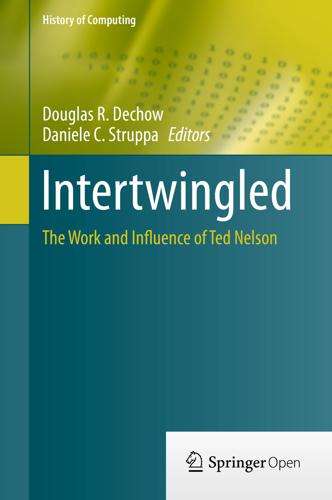
Intertwingled: The Work and Influence of Ted Nelson (History of Computing)
by
Douglas R. Dechow
Published 2 Jul 2015
Primitive personal computer languages made it difficult to store text strings longer than 256 characters, but even with those limitations, the program worked well. 8.6 “Everything Is Deeply Intertwingled” The quotation that serves as the heading for this section appeared on page D2 in the Dream Machines half of Ted’s book, Computer Lib/Dream Machines [1]. Ted was key to the development of hypertext, but he’s disappointed that we didn’t make links that work in both directions. Even one-way links can be amazing. I had a transformative experience with a Hypercard program called The Dungeon of Class Gifts. It trained lawyers about the rules for group inheritance. It’s very light-hearted and breezy. After each page of explanation, you’re asked a question with two possible answers. If you choose the right answer, you advance to the next screen. Choose the wrong one, and you’re sent to a screen picturing an explosion.
…
One of the main things I want to emphasise is that for many years it was up to Nelson to promote the idea of a world-wide hypertext publishing system. It may be self-evident, even pedestrian today, but it certainly wasn’t in the 1960s and 1970s—right into the 1980s people were still building workstation-based hypertext systems. HyperCard, the elephant in the pre-Web hypertext room that introduced the concept of linking to the general public, was a stand-alone system. NoteCards, Guide, etc., none of these were globe-spanning open publishing systems. Even in the 1980s, it seemed wacky. In a 1988 paper given at Oxford that Nelson provided to the participants of this conference (I hadn’t seen it before) called “Hypertext: the Manifest Destiny of Literature” Nelson writes, hopeful as ever:The key problem is…to create a universal literary medium, an unbounded storage and delivery system as simple in concept as the book and library, unrestricted as to what screens you may see it on, unrestricted in its organization, unimpeachable in its authenticity, and as quickly available as a phone call.
…
Again, I don’t need to tell this audience about these two men. When I give talks to a non-expert audience I always include reference to them because it was their ideas—I hadn’t met them at this point—that inspired me. The year of 1987 was a key one for hypertext. It was the year of the first ACM Hypertext conference, and the year Apple released HyperCard. It was also the year that the archive of the Earl Mountbatten of Burma arrived at the University of Southampton. Mountbatten was a cousin of the Queen, and very famous in the UK for his various military leadership roles during and after the Second World War and as the last Viceroy of India. What does this have to do with my research story?

Track Changes
by
Matthew G. Kirschenbaum
Published 1 May 2016
(So integral is this experience to some users’ confidence and comfort at the keyboard that Model M devotees have been known to stockpile spares.)33 Friedrich Nietzsche famously declared that our writing tools shape our thoughts, a terse aphorism whose own presentation as such reflects the influence of the Malling-Hansen Writing Ball (an early typewriter whose keys were arranged in a half-sphere) that he began using in 1882 as his eyesight deteriorated.34 Word processors, futuristic in design but also often awkward or arbitrary in their actual operation, provoked just such reflections among writers. “Do we think differently about what we are writing if we are writing it with a reed pen or a pen delicately whittled from the pinion of a goose, or a steel pen manufactured in exact and unalterable replication in Manchester,” asked William Dickey, a poet who would experiment with Apple’s HyperCard software late in his life. “Do we feel differently, is the stance and poise of our physical relationship to our work changed, and if it is, does that change also affect the nature and forms of our ideas?”35 Dickey’s self-questioning here anticipates the exigencies of what McGann would come to term the scholar’s art, for the questions Dickey asks are unresolvable absent close and careful attention to the particulars of individual writers and their writing instruments.
…
“A document,” he laments, “can only consist of what can be printed.”63 Jay David Bolter, a classicist who was an early advocate for computers as writing tools, rendered much the same verdict, concluding that word processing was “nostalgic” in its respect for the aesthetics of print.64 In this view, the promise and potential of newer, more experimental modes of electronic writing—including nonlinear hypertext, a term Nelson himself coined and has popularized throughout his career—is at odds with a technological paradigm whose highest achievement lies in mimicking the appearance of something that might have come from Gutenberg’s own press.65 Scholarly interest in the history of electronic literature has similarly gravitated overwhelmingly toward those authors who sought to reimagine our definitions of the literary through branching, multimodal, and interactive narratives or poetic compositions. “A story that changes every time you read it,” in the words of one of the form’s most accomplished practitioners, Michael Joyce.66 The most important platforms for this kind of experimentation were HyperCard (first released by Apple in 1987), Storyspace (initially co-designed by Joyce with Bolter and John B. Smith, and developed since 1990 by Eastgate Systems), and then the Web itself.67 Interactive fiction—so-called “text adventures,” which had a brief commercial vogue in the early 1980s through the success of a company named Infocom—have also increasingly been explored by scholars.68 Lori Emerson, among the best of recent academic critics, has carefully detailed the ways in which poets like bpNichol, Geof Huth, and Paul Zelevansky each leveraged the programmable capabilities of the early Apple II line of computers to craft innovative on-screen textual compositions.69 The texts thus produced are indeed striking, harbingers of a new aesthetic intimately tied to the procedural capabilities of digital media but also knowingly reaching back to Concrete Poetry, Surrealism, and other well-documented movements.
…
Dickey’s essay introduces a symposium on “The Writer and the Computer” that also includes contributions from Wendell Berry (who, as we will see in Chapter 7, does not buy a computer), Sven Birkerts, Robert Pinsky (co-author of the interactive fiction game Mindwheel), Rob Swigart (author of the adventure game Portal), and P. Michael Campbell. Notably, this issue of NER/BLQ is also its tenth anniversary issue, and, as its editors remark at the outset, reflects the journal’s ongoing commitment to engaging “Subjects That Matter” (v). For more on Dickey’s HyperCard poetry, which remains unpublished, see his essay “Poem Descending a Staircase,” in Hypermedia and Literary Studies, eds. Paul Delany and George P. Landow (Cambridge: MIT Press, 1994), 143–152. 36. Matt Schudell, “Lucille Clifton, Md. Poet Laureate and National Book Award Winner,” Washington Post, February 21, 2010, http://www.washingtonpost.com/wp-dyn/content/article/2010/02/20/AR2010022003419.html. 37.

The Innovators: How a Group of Inventors, Hackers, Geniuses and Geeks Created the Digital Revolution
by
Walter Isaacson
Published 6 Oct 2014
To do this he modified a superb software product developed by one of Apple’s most enchanting innovators, Bill Atkinson. It was called HyperCard, and it allowed users to make their own hyperlinked cards and documents on their computers. Apple had little idea what to do with the software, so at Atkinson’s insistence Apple gave it away free with its computers. It was easy to use, and even kids—especially kids—found ways to make HyperCard stacks of linked pictures and games. Cunningham was blown away by HyperCard when he first saw it, but he found it cumbersome. So he created a supersimple way of creating new cards and links: a blank box on each card in which you could type a title or word or phrase.
…
Author’s interview with Ev Williams. 78. Author’s interview with Ev Williams. 79. Author’s interview with Ev Williams. 80. Andrew Lih, The Wikipedia Revolution (Hyperion, 2009), 1111. See also Ward Cunningham and Bo Leuf, The Wiki Way: Quick Collaboration on the Web (Addison-Wesley, 2001); Ward Cunningham, “HyperCard Stacks,” http://c2.com/~ward/HyperCard/; Ward Cunningham, keynote speech, Wikimania, Aug. 1, 2005. 81. Ward Cunningham, “Invitation to the Pattern List,” May 1, 1995, http://c2.com/cgi/wiki?InvitationToThePatternsList. 82. Ward Cunningham, correspondence on the etymology of wiki, http://c2.com/doc/etymology.html. 83.
…
Presper, ref1, ref2, ref3, ref4, ref5, ref6, ref7, ref8, ref9, ref10, ref11, ref12, ref13, ref14, ref15, ref16, ref17, ref18 patents sought by, ref1, ref2 and public display of ENIAC, ref1 and storage of programs in ENIAC, ref1, ref2 von Neumann accused of stealing ideas by, ref1 Eckert-Mauchly Computer Corporation, ref1 Edison, Thomas, ref1, ref2 EDSAC, ref1 EDVAC, ref1, ref2, ref3, ref4 Edwards, Dan, ref1, ref2 Edwards, Elwood, ref1 Einstein, Albert, ref1, ref2, ref3, ref4, ref5, ref6, ref7 Eisenhower, Dwight, ref1, ref2, ref3, ref4, ref5, ref6 electrical circuits, ref1, ref2, ref3 needed to break German codes, ref1, ref2 electricity, ref1 Electric Kool-Aid Acid Test, The (Wolfe), ref1, ref2 Electronic Discrete Variable Automatic Calculator, see EDVAC Electronic Engineering Times, ref1 Electronic News, ref1, ref2 Electronics, ref1 Electronics Magazine, ref1 electrons, ref1, ref2, ref3, ref4 Elkind, Jerry, ref1, ref2 Elwell, Cyril, ref1 email, ref1 Emsworth, Lord, ref1 Encyclopedia Britannica, ref1 Engelbart, Doug, ref1, ref2, ref3, ref4, ref5, ref6, ref7, ref8, ref9, ref10, ref11, ref12, ref13, ref14, ref15, ref16, ref17, ref18, ref19, ref20 on human-machine interaction, ref1, ref2, ref3, ref4, ref5, ref6, ref7 English, Bill, ref1, ref2, ref3 ENIAC, ref1, ref2, ref3, ref4, ref5, ref6, ref7, ref8, ref9 decimal system used by, ref1 as first modern computer, ref1, ref2 hydrogen bomb equations worked out by, ref1 patents for work on, ref1, ref2, ref3, ref4 public unveiling of, ref1 speed of, ref1, ref2 storage of programs in, ref1, ref2 update of, ref1 women as programmers of, ref1, ref2 Enigma, ref1 Enlightenment, ref1 Enquire, ref1 Enquire Within Upon Everything, ref1, ref2, ref3, ref4 Entscheidungsproblem, ref1, ref2, ref3, ref4 Esquire, ref1, ref2, ref3 Estridge, Don, ref1 Eternal September, ref1, ref2 Ethernet, ref1, ref2n, ref3 Euclidean geometry, ref1 Eudora, ref1 Evans, David, ref1, ref2 Evans, Kent, ref1, ref2 EvHead, ref1 Excite, ref1, ref2 Expensive Planetarium, ref1 Eyser, George, ref1 Facebook, ref1, ref2, ref3, ref4 Fairchild, Sherman, ref1, ref2 Fairchild Camera and Instrument, ref1, ref2, ref3 Fairchild Semiconductor, ref1, ref2, ref3, ref4 formation of, ref1, ref2 microchips sold to weapons makers by, ref1 Noyce’s resignation from, ref1 Farnsworth, Philo, ref1 Federal Communications Commission, ref1 Felsenstein, Lee, ref1, ref2, ref3, ref4, ref5, ref6, ref7, ref8, ref9, ref10, ref11 Ferranti, ref1 Ferranti Mark I, ref1 Ferrucci, David, ref1 Feynman, Richard, ref1 file sharing, ref1 Filo, David, ref1 Firefox, ref1, ref2, ref3 “First Draft of a Report on the EDVAC, by John von Neumann,” ref1 Fischer, Dave, ref1 Flowers, Tommy, ref1, ref2, ref3, ref4 influence of, ref1 “Fool on the Hill, The,” ref1 formal systems of mathematics, ref1 Fortran, ref1, ref2, ref3, ref4 Fortune, ref1, ref2, ref3 Frankenstein, or The Modern Prometheus (Shelley), ref1, ref2, ref3 Franklin, Benjamin, ref1, ref2, ref3, ref4 Frankston, Bob, ref1 Free Software Foundation, ref1 Free Speech Movement, ref1, ref2, ref3 French, Gordon, ref1, ref2 French Revolution, ref1 Fuchs, Klaus, ref1, ref2 Fulghum, Robert, ref1 Fuller, Buckminster, ref1, ref2, ref3, ref4 Fylstra, Dan, ref1 Galaxy Games, ref1 Gale, Grant, ref1 Galison, Peter, ref1 GameLine, ref1, ref2 Garcia, Jerry, ref1 Gates, Bill, ref1, ref2, ref3, ref4, ref5, ref6, ref7, ref8, ref9, ref10, ref11, ref12, ref13, ref14, ref15, ref16, ref17, ref18 Allen’s disputes with, ref1, ref2, ref3, ref4, ref5 background of, ref1 BASIC for Altair designed by, ref1, ref2 BASIC learned by, ref1 belief of, in future of personal computer, ref1 copyright issues and, ref1, ref2, ref3 8008 language written by, ref1 electronic grid work of, ref1 Evans’s death and, ref1, ref2 at Harvard, ref1, ref2 innovator personality of, ref1 Jobs’s dispute with, ref1 Lakeside Programming Group formed by, ref1 operating system and, ref1, ref2 payroll program written by, ref1, ref2 PDP-10 work of, ref1 programming’s importance seen by, ref1 on reverse-engineering brain, ref1 Gates, Mary, ref1 Gatlinburg conference, ref1, ref2, ref3 General Electric (GE), ref1, ref2 General Post Office, ref1 general-purpose machines, ref1, ref2, ref3, ref4, ref5, ref6, ref7, ref8, ref9, ref10 Engelbert’s foreseeing of, ref1 see also memex General Relativity, ref1, ref2 geometry, ref1 germanium, ref1 Germany, codes of, ref1, ref2, ref3 Gertner, Jon, ref1, ref2 Gibson, William, ref1 Gingrich, Newt, ref1 Ginsberg, Allen, ref1 GNU, ref1 GNU/Linux, ref1, ref2, ref3, ref4, ref5, ref6 Go, ref1 Gödel, Escher, Bach (Hofstadter), ref1 Gödel, Kurt, ref1, ref2, ref3, ref4, ref5 gold, ref1 Goldberg, Adele, ref1 Goldstine, Adele, ref1, ref2, ref3, ref4 Goldstine, Herman, ref1, ref2, ref3, ref4, ref5, ref6, ref7, ref8 von Neumann’s first meeting with, ref1 Google, ref1, ref2, ref3, ref4, ref5, ref6, ref7 creation of, ref1, ref2, ref3 lawsuits of, ref1 page ranks of, ref1 self-driving cars of, ref1 Google Glass, ref1 Gopher, ref1 Gore, Al, ref1, ref2 Gore Act (1991), ref1, ref2, ref3 government funding, ref1, ref2, ref3 see also ARPANET Graetz, Martin, ref1, ref2 Gran Trak 10, ref1 graphic user interface, ref1, ref2 Grateful Dead, ref1, ref2, ref3 “Great Conversation, The” (Cerf), ref1 Greeks, ref1 Greening of America, The (Reich), ref1 Greig, Woronzow, ref1 Grinnell College, ref1, ref2, ref3 Grove, Andy, ref1, ref2, ref3, ref4, ref5 management techniques of, ref1, ref2 hackers, ref1, ref2, ref3, ref4, ref5, ref6, ref7, ref8 Hackers (Levy), ref1, ref2 Hafner, Katie, ref1, ref2, ref3 Haggerty, Pat, ref1, ref2, ref3 idea for calculator of, ref1 Hall, Justin, ref1, ref2, ref3, ref4, ref5, ref6 halting problem, ref1 Hambrecht & Quist, ref1, ref2 harmonic synthesizer, ref1 Hartree, Douglas, ref1 Harvard University, ref1, ref2, ref3, ref4, ref5, ref6, ref7, ref8 Hayden, Stone & Co., ref1, ref2 Hayes Smartmodem, ref1 Heart, Frank, ref1 “Heath Robinson,” ref1 Heinlein, Robert, ref1, ref2 Hells Angel, ref1 Hennessy, John, ref1 Herschel, John, ref1 Hertzfeld, Andy, ref1 Herzfeld, Charles, ref1, ref2, ref3 Hewlett, William, ref1, ref2, ref3, ref4 Hewlett-Packard, ref1, ref2, ref3, ref4, ref5, ref6, ref7, ref8 High Performance Computing Act (1991), ref1, ref2 Higinbotham, William, ref1 Hilbert, David, ref1, ref2, ref3, ref4, ref5, ref6 Hiltzik, Michael, ref1 Hingham Institute Study Group, ref1 hippies, ref1, ref2, ref3, ref4, ref5 Hiroshima, ref1n His Majesty’s Government Code and Cypher School, ref1 Hitler, Adolf, ref1, ref2 Hoddeson, Lillian, ref1 Hodges, Andrew, ref1 Hoefler, Don, ref1 Hoerni, Jean, ref1, ref2, ref3, ref4 Hoff, Ted, ref1, ref2 Hofstadter, Douglas, ref1 Holberton, Betty Snyder, see Snyder, Betty Hollerith, Herman, ref1, ref2 Homebrew Computer Club, ref1, ref2, ref3, ref4, ref5, ref6, ref7, ref8, ref9, ref10 Home Terminal Club, ref1 Honeywell, ref1, ref2, ref3, ref4 Hoover Dam, ref1 Hopper, Grace, ref1, ref2, ref3, ref4, ref5, ref6, ref7, ref8 communication skills of, ref1, ref2 on ENIAC’s lack of programmability, ref1 hired at Eckert-Mauchley, ref1 subroutines perfected by, ref1 Hopper, Vincent, ref1 HotWired, ref1 HotWired.com, ref1 Hourihan, Meg, ref1 House, David, ref1 House of Lords, ref1, ref2 Huffington, Arianna, ref1 Huffington Post, ref1 Human Brain Project, ref1 Human-Computer Interaction Group, ref1 human-machine interaction, ref1, ref2, ref3, ref4, ref5, ref6, ref7, ref8, ref9, ref10, ref11, ref12, ref13, ref14, ref15, ref16 Hush-A-Phone case, ref1 hydrogen bomb, ref1, ref2 HyperCard, ref1 hypertext, ref1, ref2 limitation of, ref1 Hypertext Markup Language (HTML), ref1, ref2, ref3, ref4 Hypertext Transfer Protocol (HTTP), ref1 IAS Machine, ref1 IBM, ref1, ref2, ref3, ref4, ref5, ref6, ref7, ref8, ref9, ref10, ref11, ref12, ref13, ref14, ref15, ref16, ref17 dress code at, ref1 founding of, ref1 Gates’s deal with, ref1 Jobs’s criticism of, ref1 Mark I history of, ref1, ref2 Mark I of, ref1, ref2, ref3, ref4 IBM 704, ref1 IBM 1401, ref1 Idea Factory, The (Gertner), ref1 Illich, Ivan, ref1, ref2 imitation game, ref1 incompleteness theorem, ref1, ref2 indeterminacy, ref1 individualism, ref1 Industrial Revolution, ref1, ref2, ref3, ref4, ref5 two grand concepts of, ref1 Infocast, ref1 Information Processing Techniques Office (IPTO), ref1, ref2, ref3, ref4, ref5 Information Sciences, Inc.
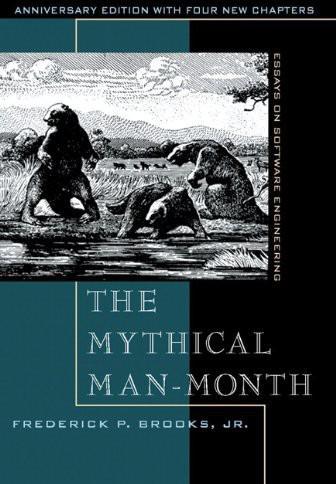
The Mythical Man-Month
by
Brooks, Jr. Frederick P.
Published 1 Jan 1975
An especially promising trend is the use of mass-market packages as the platforms on which richer and more customized products are built. A truck-tracking system is built on a shrink-wrapped database and communications package; so is a student information system. The want ads in computer magazines offer hundreds of HyperCard stacks and customized templates for Excel, dozens of special functions in Pascal for MiniCad or functions in AutoLisp for AutoCad. Metaprogramming. Building HyperCard stacks, Excel templates, or MiniCad functions is sometimes called metaprogramming, the construction of a new layer that customizes function for a subset of a package's users. The metaprogramming concept is not new, only resurgent and renamed.
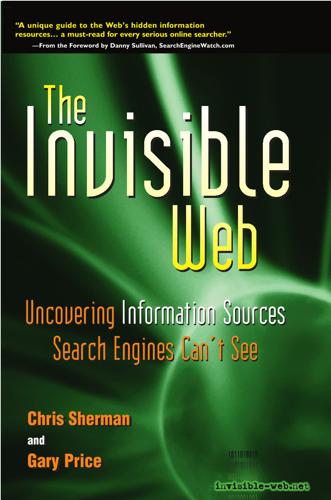
The Invisible Web: Uncovering Information Sources Search Engines Can't See
by
Gary Price
,
Chris Sherman
and
Danny Sullivan
Published 2 Jan 2003
A year later, Owl Ltd. created a program called Guide, which functioned in many respects like a contemporary Web browser, but lacked Internet connectivity. Bill Atkinson, an Apple Computer programmer best known for creating MacPaint, the first bitmap painting program, created the first truly popular hypertext program in 1987. His HyperCard program was specifically for the Macintosh, and it also lacked Net connectivity. Nonetheless, the program proved popular, and the basic functionality and concepts of hypertext were assimilated by Microsoft, appearing first in standard help systems for Windows software. Weaving the Web The foundations and pieces necessary to build a system like the World Wide Web were in place well before Tim Berners-Lee began his tinkering.
…
, 174 HSTAT (Health Care Decisionmaking), 250 HTML (HyperText Markup Language) communications and, 18 creation of, 11 direct vs. indirect URLs, 79–81 forms, 64–65 HTTP (HyperText Transfer Protocol), 11 HUD Homes for Sale, 193 HUDOC, 275 Human Resources Canada, 174–175 human resources, O*Net, 186–187 humanities, Cambridge University, 39 HyperCard, 10 hypertext definition, 2 directory use of, 22 search engines and, 62–63 Xanadu and, 10 Xerox implementation, 10 HyperText Markup Language (HTML), 11, 62 hypertext query languages, 132 HyperText Transfer Protocol (HTTP), 11 I IBM, 29, 72, 132, 202 IDEA (Electronic Directory of European Institutions), 233 420 The Invisible Web Idealab, 15 Idealist, 191 IFLA (Directory of National Union Catalogs), 160–161 IIE (Institute of International Education) passports, 211 images.
…
Congress, 237–238 Lobbyist Search Canada, 237–238 Lobbyists Lists (Florida), 308 Lobbyists Public Registry (Ontario), 308 Lobbyists Spending on Georgia Lawmakers, 307–308 Local Harvest, 328 logical operators, Boolean, 6 London Stock Exchange Listed Company Directory, 185 London Theatre Guide, 224 London Times, 89 London Transport System, 340 LookSmart, 22–26 lookup services, 187–188 Los Angeles Times, 89–90, 287 lotteries (U.K.), 236 Lotus Knowledge Base, 201 Lycos, 15, 112 Lycos Company Online, 165 M Macintosh HyperCard, 10 magazines, full text, 105 Mailbox and Packing Store Database, 334 mailing lists, 7 Major League Baseball Player Search, 339 Major Malls (DMM), Directory of, 193 Making of America (MOA) Project, 264–265 Makulowich, John, 12 malls, directory of, 193 mammography, certified centers, 252 Man and the Biosphere Species Database, 346–347 Manufacturer and User Facility Device Experience Database (MAUDE), 254 MapBlast, 97, 337 Maporama, 337 Mapquest, 97 maps, 40, 97, 316, 335–337, 357 Maptech Map Server, 337 Marcus Garvey and UNIA Papers, 265 Marin Institute for the Prevention of Alcohol and Other Drug Problems, 243 Marine Recreational Fisheries Statistics Survey Database, 172 Marine Safety Information System (MSIS), U.S.C.G., 386 Marines Body Fat Calculator, U.S., 256 424 The Invisible Web maritime information resources, 386–387 marketing information resources, 188–189 Mark’s Online Domain Names Search, 203 MARNA (Maritime Nautical) Database, 269 Marriage and Divorce Verification (Colorado), 308 Marriage Inquiry System (Clark County, NV/Las Vegas), 308 Martindale-Hubbel Lawyer Locator, 272–273 Martindale’s Calculators Online Center, 323 MasterCard/Maestro/Cirrus ATM Locator, 335 Material Safety Data Sheets (MSDS), 355–356 mathematics information resources, 208, 362.

The Optimist: Sam Altman, OpenAI, and the Race to Invent the Future
by
Keach Hagey
Published 19 May 2025
“By working closely with young children, and learning from their intuitive responses to our system’s interface and behavior, we hope to evolve a system whose simplicity and ease of use will enable more people to tailor their computer’s behavior to meet their own needs and desires,” wrote Larry Yaeger, Kay’s colleague at the Open School. The three hundred first through sixth graders at the Open School studied, say, biology by using computers to create animated animals and then programming their behavior. They learned to code and used dynamic authoring tools like HyperCard, a pre-internet hypermedia system, for their homework. “The programs we built reminded me of toys—intuitive graphical toys that enabled us to convey ideas in delightful and profound ways,” McCauley said in an interview with the Chicago Toy & Game Group.27 The Vivarium program’s advisory council included such heavyweights as Geoff Hinton, Marvin Minsky, Douglas Adams (the author of The Hitchhiker’s Guide to the Galaxy), and Koko, the sign language–speaking gorilla.
…
Louis, 26, 53 Delicious (website), 75 Deming, Peter, 59–60, 64 democracy, 152–53, 225 Democratic Party, 21, 204, 207–8, 234, 296 Deployment Safety Board (DSB), 279–80, 287 Deshpande, Alok, 58–61, 64, 76, 85, 89, 102, 111, 127 Deshpande, Sheila, 58, 91 Desmond-Hellmann, Sue, 303 Deutsch, David, 314–15 Dewey, John, 45 deworming charities, 211, 213 Diamandis, Peter, 144, 210 diffusion model trained by adding digital “noise,” 262–63 Digital Chocolate mobile gaming company, 97 Diller, Barry, 229 Ditton, Andy, 34–35 DJ Kay Slay, 102 DJI drones, 231 DLA Piper lobbying firm, 300 DNNresearch, 182 Doblet phone-charging startup, 149, 177 Dodgeball location-based app, 104, 105, 118 Donahue, Nick, 260–61 Dota 2 (video game), 215–18, 221–22, 242, 284 dot-com bubble of the late 1990s, 73, 87, 93 Dowling, Steve, 287 Dropbox, 123, 139, 150, 152, 157, 158–59, 247 drop-outs, tech bros as mostly, 62, 88, 91–92, 96, 108, 113, 124, 132, 175, 179, 217–18 Dubai, 274 eBay, 82, 168 economic growth democracy and, 152–53, 225 dot-com bubble of the late 1990s, 73, 87, 93 financial crisis of 2008, 4, 116–17, 131, 137, 150 as a kind of spiritual hack, 153 real wages, 132 Edge web browser, 272 Edison, Thomas, 46 effective altruism, 2, 4, 6 189–214, 224, 265–66, 276, 300 “bed nets” era of, 212 deworming charities, 211, 213 GreaterWrong forum, 301 Open Philanthropy Project, 213–14, 241, 266–67, 276–77, 299–301 see also AI safety Effective Ventures, 276 Efficient Market Hypothesis, 144 Eichler, Mike, 30, 40 80,000 Hours, 211–12 Elbaz, Gil, 243 Electronic Arts, 97 Electronic Frontier Foundation (EFF), 59, 98 energy production, 13, 134, 231, 280, 313–14 nuclear energy, 12–13, 57, 108, 134–36, 154, 177, 205, 230, 259, 280 solar energy, 28 see also compute Enigma machine, 139 Enlightenment, 314–15 Enron, 60 esports, 215–16 Evans, Jon, 142 Extropians, 141–42, 144–45, 164–65, 199, 214 Fabolous (DJ), 102 Facebook, 60, 63, 73, 79–80, 96, 101, 116–17, 123, 127, 131, 137, 161, 169, 184, 188, 204, 207–8, 229 fact-checking, 265 Fairchild Semiconductor, 72, 87 fake news, 265 Federal Communications Commission (FCC), 59, 106 Federal Trade Commission, 285 Feldman, Ellen, 173 Fellow Robots robotics company, 210 Fermi’s paradox, 170 “few shot” learning, 244 “Feynman method of being a genius,” 219 Filan, Daniel, 305 financial crisis of 2008, 4, 116–17, 131, 137, 150 “finding product-market fit,” 107, 156 “finding your tribe,” 157 Finney, Hal, 142 Firefox web browser, 63 Flexport logistics platform, 138 Florida, 40 “Flowers for Algernon” (Keyes), 140 Foo Camp, 63 Forbes (magazine), 257 Foreign Affairs (journal), 267 Foresight Institute, a technology think tank, 144 Forstall, Scott, 112, 114, 116 “Founder Mode” (Graham), 263 founders as kings, 6, 60, 65, 68, 70–75, 95 Founders at Work (Livingston), 63, 64 Founders Fund venture firm, 2, 6, 132, 139, 147, 226 Foursquare, 118–20, 126 Francis, Peggy, 32, 36 “Free Oceana,” 141 Freemasonry, 31 Fridman, Lex, 17, 304 Friend, Tad, 201 From Zero to One (Thiel and Masters), 132, 230 frontier in American history, 153 FroSoCo (short for Freshman Sophomore College), 55, 57 FTX crypto market, 212, 257 Furstenberg, Diane von, 229 Future of Humanity Institute, 5, 165–66, 241–42, 267 Future of Life conference, Puerto Rico (2015), 167–70, 207, 211 Future of Life Institute, 145, 168, 208–9, 272 Galef, Julia, 225 Galois, Évariste, 174 game theory, 166, 285 Gates, Bill, 65, 90, 212, 216, 267–68 Gates, Melinda, 212 Gauss, Carl Friedrich, 174 Gawker Media, 137, 204–5 gay marriage rights, 56, 296 Gay Straight Alliance, 52 Gaza, war in, 289 GE (General Electric), 210 Gebbia, Joe, 263 Gebru, Timnit, 252–53, 270–71 Gemini AI model, 307 general artificial intelligence (AGI), see AI (artificial intelligence) generative AI, 1, 3, 9, 219, 221, 270 generative pre-trained transformers (GPTs), 3, 221, see also various GPTs under OpenAI genius, human, 77, 81, 127, 140, 156, 219 “Gentle Seduction, The” (Stiegler), 199–200 George, Henry, 256 Georgia, 23–25, 58, 104, 142 GeoSim 3D modeling company, 209–10 Germany, 274 Gibney, Bruce, 132–33 Gibstine, Connie (Sam’s mother), 15, 31–38, 39–50, 53–54, 91, 201–2, 227–28, 248–50, 261, 295, 312 Gil, Elad, 136 Gillette, 62, 71 Ginsberg, Allen, 166 Girard, René, 131 Github Copilot, 262 Gittell, Ross, 35 GiveWell, 212–13, 266 Giving Pledge, 212 Giving What We Can, 211 global positioning system (GPS) chips in mobile phones, 57–58, 99 Gmail, 123, 150, 286–87 Go (game), 191–92, 216–17 “godfathers of AI,” 188, 312 Goertzel, Ben, 145 Goetz, Jim, 88 Goldman Sachs, 59, 64, 150, 225 Good Ventures foundation, 212–13 Google AdSense, 243 Alphabet, 194, 271 “Attention Is All You Need” (“the transformer paper”), 218–19, 270 Bard conversational model, 271 Chrome web browser, 272 DeepMind acquisition, 146–48, 154, 165, 168–69, 171–72, 184, 189–94, 208, 211, 217, 221, 270 Dodgeball location-based app acquisition, 104, 105, 118, 104 Gemini AI model, 307 Gmail, 123, 150, 286–87 recent initial public offering (IPO) of, 87 YouTube acquisition, 93–94 see also Anthropic Google assistant, 271 Google Brain, 82, 169, 184, 243, 270 Google Colab Notebook, 247 Google I/O annual developer conference, 307 Google Maps, 59 Google Search, 270 Gordon-Levitt, Joseph, 210, 225 GotNews (website), 204 GPTs (generative pre-trained transformers), see chatbots; various GPTs under OpenAI Graham, Paul, 3, 13–16, 62–65, 67–76, 81–82, 94, 136, 149, 151, 186, 263 “A Unified Theory of VC Suckage,” 72–73 “Collison installation,” 246 “Founder Mode,” 263 “How to Start a Startup,” 69–70 painting’s influence on, 67–69 see also Y Combinator (YC) graphical user interfaces, 195 graphics processing units (GPUs), 176, 181–82, 219, 247, 255 Gras, Mike, 249 GreaterWrong forum, 301 Green Dot prepaid debit card company, 126–27, 133 Green-Lowe, Jason, 301–2 Grey, Aubrey de, 144, 259 Groom, Lachy, 151–52, 154, 157 Gross, Daniel, 309 Groupon, 119, 116 Guardian, The (newspaper), 220 Gurevich, Mikhail, 77, 82 Gurson, Doktor, 149, 177 Hacker News message board, 132, 151 hackers/hacking, 3, 57, 63, 68–70, 160n, 162 Haffner & Gibstine Real Estate, 32 Halcyon Molecular, 257–59 Hall, Ed, 26 Halo 3 (video game), 95, 109 ham radios, 32–33, 48 Hanson, Robin, 141–42, 144 Harder, Josh, 207 “hardware strategy, the,” 226, see also compute Harris, Kamala, 273, 313 Harris, Sylvia, 24–25 Hartford Courant (newspaper), 28 Hartford, CT, 28–29 Hartford Institute of Criminal and Social Justice, 28 Hartmann, Frank, 28–29 Harvard Computer Society, 69 Hassabis, Demis, 145–47, 169, 171–72, 192, 209 Hassenfeld, Elie, 212 Hawaii, 227, 250, 260, 295, 311–12 Hawking, Stephen, 169, 211 Hawkins, Trip, 97 HBO’s Silicon Valley, 101, 258–59 HBO’s Westworld, 199 heads, frozen, 141 Health Extension Foundation, 258 Helion Energy nuclear fusion startup, 13, 136, 207, 259, 280, 298 Helo telepresence robot, 210 Her (film), 307 Herzog, Isaac, 274 Hill, Daniel, 165 Hilton, Jacob, 265 Hinduism, 17 Hinton, Geoff, 178–84, 188, 266, 312–13 hip-hop, 102 Hipmunk travel search company, 162 HIV/AIDS, 33, 43, 49 Hoffman, Reid, 109, 172, 223, 231, 234–35, 277, 296 Hogan, Hulk, 205 Holocaust, attempted analogies to the, 135 Homejoy, 195 Horizon Institute for Public Service, 301 housing, see affordable housing Houston, Drew, 157 “How to Start a Startup” (Graham), 69–70 Howard, James, 110–11 Howl (Ginsberg), 166 Huffman, Steve, 69–70, 75, 76–78, 81, 162–63 Hui, Fan, 192 Human Advancement Research Community (HARC), 195, 197–98, 236 humans in a democratic society, 135 human genius, 77, 81, 127, 140, 156, 219 human-computer interfaces, 210 learning to truly produce knowledge, 314 neuroscience and studying the human brain, 145–48, 202 “only good for hugs or sex,” 269 their brains as the original neural nets, 181 see also chatbots Hunnewell, H. H., 71 Hurd, William, 266, 278 Hydrazine Capital, 136–38, 139, 156, 161, 207, 260 HyperCard, 209 IBM’s Deep Blue, 191 Igleheart, Walker, 27 ImageNet competition, 182, 184 immortality Ambrosia, 258–59 death as a solvable problem, 141, 143, 200, 227, 315 frozen heads, 141 Health Extension Foundation, 258 transhumanist dream of, 170 young blood transfusions, 258–59 Inc. (magazine), 258 Inception (film), 210 India, 14, 134, 274–75 Indiana Pacers basketball team, 209 Inflection AI, 277 Infogami, 76 Information Technology and Innovation Foundation, 300 Information, The (news site), 311 Infosys, 187, 197, 236 initial coin offering (ICO), 221–22 innovation breakthrough technologies, 153, 207–8 CHIPS and Science Act, 298 computer vision, 168, 182, 184, 247 incremental cost of selling an additional widget, 72 “levers” of change, 154 moonshots, 13, 16, 136, 194 “moving fast and breaking things,” 237 nanotechnology, 144, 164 the need for “adults in the room,” 96–98, 217 the problem of incremental or even fake problems, 132–33, 180 “productizing” technologies, 245 quest for a “new Bell Labs,” 140, 185 self-reinforcing cycle of exponential technological progress, 140 serendipity and, 98 time horizon of, 153, 174, 185 see also software development; tech industry insider information, 144 InstructGPT, 264 insurance industry, 24, 29, 37, 139, 228, 248, 273 Intel Research Seattle, 110–11 intellectual property, 185, 281 Common Crawl, 243–44 copyright, 160n, 220, 243, 244 open-source technologies, 95, 186, 214, 247, 263 in the public domain, 196 Tesla’s patents as openly available, 214 trademark issues, 101 voice called “Sky,” 307–8 Intelligence Age, 314 IntelliGenesis, 145 International, The (global esports championship), 215 Internet Explorer web browser, 272 investing angel investing, 70–74, 81, 123, 138, 150–52, 309 “capped profit” model, 229–30, 304 conflicts of interest, 225, 236, 303 deal flow, 88, 95, 124 Efficient Market Hypothesis, 144 employee shares, 290 follow-on investments, 159 insider information and, 144 issues of equity, 6, 7, 18, 72, 89–91, 94–95, 138, 158, 172, 185, 190, 222, 233–36, 256, 273–74, 302, 306 Lehman Brothers collapse, 116 lessons from the art market’s inefficiency and opacity, 68 limited partners (LPs), 72, 136, 124, 151, 155, 159, 234, 236, 281 massive valuations of tech companies, 71, 73, 138–40, 152, 290 preferred stock, 90 “product-market fit,” 107, 157 profiting off carried interest (“carry”), 73, 158, 281 public funds and private investment, 314 Reddit share offerings, 161, 163 Series A investment round, 89, 101, 125, 136, 156, 158–59 university endowments, 72, 155, 159 volatility, 137 see also Sequoia Capital; startups; tech industry; Y Combinator (YC) IOTA Foundation, 275 iPads, 197 iPhones, 110–16, 118, 119 Irvine, CA, 99, 105 Isaacson, Walter, 171–72 Ishutin, Danil “Dendi,” 215–16 Isilon data storage company, 122 Israel, 179, 274 Istanbul, 232 Ive, Jony, 280 Jacobstein, Mark, 60–61, 97–98, 102, 107–9 jailbreaking the iPhone, 112 Japan, 23, 79, 134 Jin, Berber, 11 Jobs, Steve, 61, 85, 87, 90, 110–16 Johansson, Scarlett, 307–8 John Burroughs School, 15–16, 45–46, 53, 202, 227 Johnson, Boris, 205 Johnson, Charles, 204–5 Józefowic, Rafał, 218 Jump, Brian, 46–48, 51 Justin.tv, 82, 157, 293 Kan, Justin, 76, 81–82, 157, 293 Kansas City, 41, 62, 78, 99 Karnofsky, Holden, 212–13, 234, 266–67 Karpathy, Andrej, 184–86, 189–93, 221, 223 Kasparov, Garry, 191 Kay, Alan, 195–98, 209–10 Kennedy, John, 273–74 Kennedy, Len, 105–6 Kennedy, Leroy, 22 Kepchar, Georgeann, 47 Keyes, Daniel, 140 Khashoggi, Jamal, 232 Khosla Ventures, 230, 235, 257 Khosla, Vinod, 230 Kiko online calendar app, 76, 81 Kingma, Durk, 184 Kingsbury, Kathy, 53 Kirtley, David, 259 Kleiner Perkins venture firm, 162, 230 Knapp, Brian, 106, 109, 121 Knife Fight (film), 292 Koko the gorilla, 210 Kolpino housing complex in Leningrad, 27n Kozmo.com Kit-Kat delivery services, 132 Krisiloff brothers (Matt and Scott), 206–7, 296–97 Krizhevsky, Alex, 178, 182, 266 Kurzweil, Ray, 142, 144, 210 Kushner, Josh, 161, 290 Kutcher, Ashton, 138 Kwon, Jason, 290, 293 L5 Society, 144 Ladue suburb of St.
…
Alexander), 165–66 Meena the chatbot, 270 Memamp desktop search company, 76 Mendelsohn, Matt, 45 Metro (UK newspaper), 242 Metz, Cade, 145–46, 199 MGX investment fund, 310 Microsoft in the AI arms race, 270 Azure cloud, 216, 237, 272 and the Biden campaign, 296 Bill and Melinda Gates Foundation, 303 Bing search engine, 216, 271 during the “blip” and beyond, 277, 279–80, 282–83, 288–89, 293–94, 303–4, 310, 313 Edge web browser, 272 GitHub Copilot on Visual Studio, 262 HyperCard, 209 Inflection AI acquisition, 277 Internet Explorer web browser, 272 LinkedIn acquisition, 234 OpenAI’s relationship with, 2, 11, 13, 216–17, 226, 229–30, 234–35, 237, 245, 271–72, 303–4, 310, 313 QBasic language, 56 regulation of AI, 299–300 Tay the chatbot, 270 valuation of, 298 Visual Basic language, 56 Millennials, 4, 137, 205 Milner, Yuri, 138, 199 mimetic theory, 131 Minsky, Marvin, 142, 210 MIT (Massachusetts Institute of Technology), 63, 64, 92, 124, 160, 175, 178, 212 MIT Technology Review, 258–59, 269 Mithril Capital, 136 mobile phones enter the iPhone, 110–16, 118, 119 global positioning system (GPS) chips in, 57–58, 99 location-based services, 58–59, 106–7, 118–19 phone makers as the serfs of the mobile industry, 110 proprietary software on, 79 wireless carriers, 58–59, 75, 79, 90, 98, 100–9, 110, 118, 120, 159 mobile virtual network operator (MVNO), 99 Modi, Narendra, 14, 274, 275 Moloch (a god), 165–66 Monongahela Valley of Pennsylvania (Mon Valley), 30, 40 moonshots, 13, 16, 136, 194 Moore, Demi, 138 “Moore’s Law for Everything” (Altman), 255 More, Max, 141 Morehead-Cain Scholarship at the University of North Carolina at Chapel Hill, 53 Moritz, Michael, 16, 87–89, 112–13, 117, 186, 206 Morris, Robert Tappan, 63, 68, 74 Moscone Center West in San Francisco, 115 Moskovitz, Dustin, 212–13, 259, 300 Mountain View, CA, 85, 94, 107, 122, 133, 139, 149, 161, 172, 182, 235 “moving fast and breaking things,” 237 Mozilla Foundation, 63, 233–35 Mulherin, Oliver, 275, 288, 295, 311 Murati, Mira, 225–26, 242–43, 246–48, 268, 282–93, 304–5, 307–8 Musk, Elon, 2, 5 as an AI doomer, 2, 5, 163, 167–72, 214–15, 273–74 children fathered by, 277 colonization of Mars, 144, 147, 170–71 DeepMind investment, 147 departing OpenAI, 216–17, 221–24, 229, 234–36, 277, 304 fighting aging, 257 Halcyon Molecular, 257–59 lawsuit against OpenAI, 14–15, 304, 313 Neuralink, 193, 234 at OpenAI’s founding and beyond, 170–72, 183, 185–88, 192–94, 198, 213–14, 216–17, 221–24 in politics, 207, 313 relationship with Sam Altman, 16, 147, 170–72, 183, 194, 214–15 SpaceX, 147, 153, 167, 170–71, 187, 194 Tesla, 153, 167, 194, 223–26, 234, 255 Twitter, 118, 158, 169, 246–47, 261, 270, 281 X.com originally, 125 xAI, 15, 277, 310 MyMobileMenu (MMM) food ordering system, 75 MySpace, 103, 116 Nadella, Satya, 216, 229–30, 237, 271–72, 273, 288–89, 293–94 Nakamoto, Satoshi, 142 nanotechnology, 144, 164 Napa Valley, 185, 190, 260 NASA, 132–33 NASDAQ, 97 Nathoo, Kirsty, 139 National Center for Missing & Exploited Children, 98 National Institute of Standards and Technology (NIST), 299, 301 National Security Council, 299, 301 “natively multimodal,” 307 natural language processing, 174 Nature (journal), 148, 192 Nawrocki, Bob, 25–26 NBC Universal, 229 Nectome, 258 Neom, a megacity in Saudi Arabia, 231–32 Netflix, 204, 229 Neuman, John von, 140 neural networks, 147, 164, 176, 179–82, 190–93, 219, 221, 243, 314 Neuralink, 193, 234 NeurIPS (Conference on Neural Information Processing Systems), 178, 186, 305 neuroscience, 145–48, 202 New Enterprise Associates (NEA), 61–62, 74–75, 77, 80–81, 85–86, 89, 91, 92, 117, 121 New Hampshire, 297 New York (magazine), 134, 250, 261–62, 281 New York City, 10, 29–30, 43, 67, 86, 101–2 New York Stock Exchange, 163 New York Times Magazine, The, 139 New York Times, The, 29, 63, 132, 163, 217, 244, 270, 286, 288, 308, 312–13 New Yorker, The (magazine), 49, 81, 128, 152–54, 160, 165, 201–2, 259–60 New Zealand, 145, 171 Newhouse, Steve, 162 News Corp, 307 “newscasters,” 73 Newsom, Gavin, 205, 309 Newton, Thandiwe, 199 Nextel, 58, 99, 105–6 1910 Genetics, 250 Ng, Andrew, 57, 90, 170, 266 Nicholls, GA, 23 Nobel Prizes in Physics, 219, 312 Noerper, Thelma, 25 Nolan, Jonathan, 199 nonprofit structure of OpenAI, 4–5, 14–16, 28, 172, 184–87, 198, 222–23, 233–34, 236, 266, 275 Nosek, Luke, 147 nuclear energy, 12–13, 57, 108, 134–36, 154, 177, 205, 230, 259, 280 nuclear weapons, 27n, 168, 213 nude celebrity photos leaked by hackers, 162 Nwankwo, Jen, 250 o1 (“Strawberry”), 284, 309 Oakland, CA, 195 Obama, Barack, 21, 172, 207–8, 266 Ohanian, Alexis, 69–70, 75, 81, 162 Oklo fission microreactor startup, 13, 137, 280 Olah, Chris, 178, 184 1billionmasks.com, 250 O’Neill, Megan, 28–29 “On the Dangers of Stochastic Parrots: Can Language Models Be Too Big?”
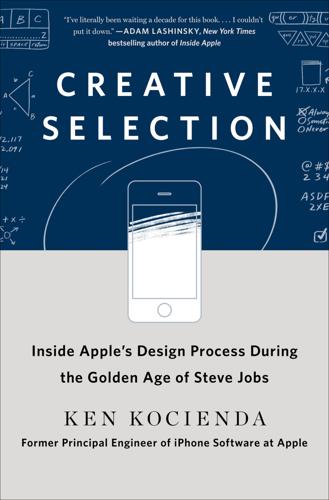
Creative Selection: Inside Apple's Design Process During the Golden Age of Steve Jobs
by
Ken Kocienda
Published 3 Sep 2018
As I walked past the front of the Apple Store and turned left down Kipling Street in Palo Alto, and peered ahead to see the end of the line in the distance, I saw him. Bill Atkinson, the software virtuoso, graphics whiz, one of the visionary contributors to the original Macintosh, developer of revolutionary apps like MacPaint and HyperCard. Since Bill had left Apple long ago, he had to wait in line just like everyone else. Except Bill was never just like everyone else. He was excitedly holding court for the small clutch of people around him who knew who he was. He was energetic, and he was waving his arms around a little. As I walked up to him, I noticed he was gesticulating toward something in his hand, a curious-looking, phone-shaped something.
…
See also collaboration; craft; decisiveness; diligence; empathy; inspiration; taste Fadell, Tony, 138, 162 Feynman, Richard, 187–188 Finder, 47 FIXMEs (source code annotations), 77, 80–82, 86–88, 95 form factor, 137, 160, 182 Forstall, Scott, 234–236, 249 browser development and, 54, 70, 102, 113, 114 “eff grackles” demo and, 193–196 email editing project and, 115–117, 130 iPad keyboard demo and, 16–17, 24–28, 31–36 keyboard development and, 131–136, 138–139, 171, 193–196 Kocienda’s interview with, 47–48 multitouch multitasking gestures and, 257–261 tap target game and, 226–227 text entry and, 234 Ganatra, Nitin, 180–181, 185 Gates, Bill, 48 General Public License (GPL), 40 Giggly Demo (touchscreen keyboard autocorrection), 177–180, 185–186, 189–190, 192, 214 GNOME project, 43–44, 56 GNU Project, 40–43 Google, 42, 94, 114, 117, 133–134 A/B color choice algorithm, 212–213, 218, 242 Android, 3, 42 Maps, 53n Graziano, Joseph, 105 handheld personal digital assistant, 8, 160, 189–190, 192–193, 195, 256 handwriting recognition, 8, 160, 189–190, 192–193, 256 Heisenberg, Werner, 121 heisenbugs, 121, 126, 128 Hertzfeld, Andy, 42–43 Herz, Scott, 140, 226, 236, 248–249 home screen, 225–227, 241, 258–260 SpringBoard (icon launcher program), 137, 139–141, 180, 224–225 Human Interface (HI) team, 17–18, 136, 171, 229 HyperCard, 254 Hypertext Markup Language (HTML), 49, 121–131 IBM, 58 include directive, 72–73 insertion point, 118–122, 125–130, 139, 234–235, 241–242, 247 behavioral rules (simple and complicated), 119–121 movement, 118–130, 241–242, 247 inspiration Apple Way and, 251 definition of, 3, 247 demos and, 66, 157, 218, 250 essential element of success, 3, 5, 247–248, 250 Purple project (iPhone) and, 157, 228–229 Safari project and, 84–88, 112 success ratio to perspiration, 85–87, 217, 269–70n6 Internet Relay Chat (IRC), 91 intersections algorithms and heuristics, 240–247, 251 comfort levels, 224–227 Human Interface (HI) team, 17–18, 136, 171, 229 of iPhone and effort to create it, 246–247 of iPhone and skeptics, 246 of Kocienda and Jobs, 245–246 of Kocienda’s keyboard and world, 245 mental load, 232–237 of people and commitment, 249–251 Purple-era examples, 237–245 seven essential elements of success and, 247–248 smoothness, 227–230 of technology and liberal arts, 17, 221–245 iOS 4, 257 iOS 5, 258, 261 iOS 8, 235n iOS App Store, 12 iPad, 223, 248, 257–261 K48 (internal code name), 3 keyboard demo, 7–19, 25–37, 234, 257 keyboard development, 19–25 multitouch multitasking gestures, 257–258 iPhone glass display prototype, 208–209 Macworld Conference & Expo (San Francisco, 2007), 210, 221–222, 234, 245–246, 253-254 Macworld Expo (Boston, 1997), 48 Macworld Expo (San Francisco, 2003), 102–112 Patent, 239–240, 250 Purple (product code name), 9, 135 release date (June 29, 2007), 253–254 See also keyboard design and development iPod, 2–3, 47, 49, 132n, 138, 160, 162, 187 JavaScript, 49, 80 JavaScript: The Definitive Guide, 3rd Edition (Flanagan), 48 Jobs, Steve death of, 263 decisiveness of, 5, 30–37, 248 “Design is how it works,” 187, 245 email editing project, 116–117 Gates and, 48 interview with Brian Williams, 131 Kocienda’s iPad keyboard demo to, 7–19, 25–37, 234, 257 Macworld Conference & Expo (San Francisco, 2007), 210, 221–222, 234, 245–246, 253–254 Macworld Expo (Boston, 1997), 48 Macworld Expo (San Francisco, 2003), 102–112 management style, 217 on products and users, 226 Purple project (iPhone), 137–139, 149, 199, 207, 216, 222–223 Safari project and, 48–49, 53, 91–93, 100, 218 Johnson, Steven, 84 judgment, 4, 183–184, 214, 233, 242, 244, 248 Kant, Immanuel, 182–183 KDE (programming community), 56–57, 60, 67–70, 76 keyboard design and development bigger keys layout (iPad), 21–30, 32, 36, 234 Blob keyboard prototype, 145–146 can’t miss feature, 239 derby demo winner, 149–157, 171–172 empathy and, 182–183, 185, 188–189 iPad keyboard demo, 7–19, 25–37, 234, 257 iPad keyboard development, 19–25 letter pop-ups, 175, 201 likability, 160, 185–186, 189 keyboard design and development (continued) more-keys layout (iPad), 21–30, 36, 235 patents, 239–240 pattern skew algorithm, 203–206, 234, 243–244 product-killing potential and, 160 QuickType, 235n QWERTY, 146–148, 172–189, 196–197, 199–200, 248–249 as “science project,” 8–9 single-letter QWERTY keyboard, 172–176 taste and, 182–187 thumb-typing, 8, 139–141, 144, 151, 178, 185, 189, 235 touchscreen text entry, 159–190 Keynote (app), 26, 119, 160 KHTML, 69, 71 Kidder, Tracy, 117 KJS, 69, 78–79 Knuth, Donald, 97, 100, 184 Kocienda, Ken departure from Apple, 263–264 DRI for web page editing project, 113–117 interview with Apple, 47–49 iPad keyboard demo to Jobs, 7–19, 25–37, 234, 257 promotion to Principal Engineer, iPhone Software, 19, 257 Konqueror (open source browser), 53–79, 82, 103, 248, 250 Williamson’s “crystal ball” demo of, 53–66 Lamiraux, Henri, 258, 261–262 iPad keyboard demo and, 12–13, 14–15, 24–25, 30, 32–34, 36 Purple project (iPhone) and, 132–142, 150, 152, 157, 160, 180, 192–193, 208, 211 Lesser General Public License (LGPL), 75 licenses, 43, 50–51, 74–77, 88 likability, 160, 185–186, 189 Lingo (programming language), 20 Linux (open-source operating system), 42–43, 56–58, 68, 76 X Windows (graphical system), 57 living on dogfood, 170 Lombardi, Vince, 108–112, 126, 218, 271n5, 271n8, 272n9 Mac OS X, 14, 47–48, 51–52, 57–58, 68, 75 Macintosh (original 1984 model), 42–43, 223, 228, 254, 256 MacPaint, 254 Macworld Conference & Expo (San Francisco, 2007), 210, 221–222, 234, 245–246, 253–254 Macworld Expo (Boston, 1997), 48 Macworld Expo (San Francisco, 2003), 102–112 Madden, John, 110 Mail (app), 12, 36, 47, 118, 121, 139, 141, 180, 224 Matteson, Trey, 125–130, 247 Melton, Don, 44–49 Safari project, 50–61, 67–70, 74–75, 79, 82, 85–88, 93–97, 100, 102, 211–212, 214, 250 web page editing project, 112–114, 129 mental load, 232–236 Messages (app), 12 metadata, 124, 194 Microsoft, 39–40, 246 Internet Explorer, 48–50, 91–92, 107 PowerPoint, 26, 119 Windows, 2–3, 42–43, 45, 56–57, 104 Word, 119, 121 Mozilla, 45, 51–54, 59–60, 67, 69 multitouch-aware user interface system, 138–139 multitouch technology, 136–140, 150, 228–229, 230n, 239 multitouch multitasking gestures, 257–261 Nautilus, 43–44, 46, 218 Netscape, 39, 44–46, 50, 52, 58, 75, 211–212, 267n3 Newton (handheld personal digital assistant), 8, 160, 189–190, 192–193, 195, 256 Newton, James, 269n6 NeXT, 16, 53–54, 116, 126 AppKit, 126, 138 nondisclosure agreements (NDAs), 135, 199 Notes, 28, 36, 139, 141, 206, 209, 224 Objective-C (programming language), 137 On the Origin of the Species (Darwin), 215 open source movement, 45–46, 50–51, 54, 67, 75 Konqueror, 56–61, 64–79, 82, 102, 248, 250 Mozilla, 45, 51–54, 59–60, 67, 69 optimization, software, 95–102, 184, 243, 247, 251, 270n2 Ording, Bas iPad keyboard demo, 27–36, 257 iPad keyboard development, 18–26 “more keys” layout of, 21–25, 248 Purple project (iPhone), 137, 139, 175n, 249 OS/360 mainframe operating system project (IBM), 58 Page Load Test (PLT), 93–97, 100–102, 112, 240, 247 Pages (app), 119 pattern skew algorithm, 203–206, 234, 243–244 pinch to zoom, 257 Platform Experience, 47 pop-ups, 175, 175n, 201 QWERTY keyboard, 146–148, 172–189, 196–197, 199–200, 248–249 Radar (bug tracking program), 210–211, 253 reality distortion field (RDF), 27 release dates, 211–212 Macworld Conference & Expo (San Francisco, 2007), 210, 221–222, 234, 245–246, 253–254 Macworld Expo (Boston, 1997), 48 Macworld Expo (San Francisco, 2003), 102–112 Retina display, 10 Safari project beta release, 113 Black Slab Encounter (first web page loaded), 81–82, 85–89, 93, 102, 157, 163, 180, 248 compilation, 70–74, 77–78, 88 crystal ball demo (Konqueror web), 53–66 FIXMEs (source code annotations), 77, 80–82, 86–88, 95 football analogy to technology work on, 108–112 Konqueror and, 53–79, 82, 103, 248, 250 licensing, 43, 50–51, 74–77, 88 Macworld Expo (San Francisco, 2003) announcement, 102–112 Mozilla and, 45, 51–54, 59–60, 67, 69 naming of Safari, 102–103 Netscape and, 39, 44–46, 50, 52, 58, 75, 211–212, 267n3 open source movement and, 45–46, 50–60, 64–79 optimization, 95–102 Page Load Test (PLT), 93–97, 100–101, 112, 240, 247 porting strategy, 74–79, 87–88, 103, 156 source code, 40–42, 45–46, 50–52, 54, 65–88, 94–95, 100–101 speed and, 91–102, 107–112 Williamson’s “crystal ball” Konqueror demo, 39, 53–66 Schiller, Phil, 104, 161–163, 174, 182 Seagull Manager, 217 Serlet, Bertrand, 54, 70 shim (software translation layer), 57–60 Shneiderman, Ben, 228 “signing up” for work, 117, 135, 153, 258 Singin’ in the Rain (film), 62–65 Soul of a New Machine (Kidder), 117 source code, 40–42, 45–46, 50, 72–80, 94, 100–101, 264 FIXMEs (annotations), 77, 80–82, 86–88, 95 Konqueror, 65, 67–80 Mozilla, 50–52, 54 space bar, 20, 156, 176–178, 195 SpringBoard (home screen icon launcher program), 137, 139–141, 180, 224–225 Stallman, Richard, 40–43, 45, 74–75, 79–80, 82, 85–89, 103 Star Wars (film), 223 Starr, Bart, 108–109 Story of Great Inventions, The (Burns), 83–84 super-secret project, 132–135 Swan, Joseph, 84 Switcher marketing campaign, 104 Sync Services, 132–133 synchronization, data, 132–136 System 7, 125–126 2001: A Space Odyssey (film), 82 taste Apple Way and, 251 balance, 185–187 beauty, 187–188 definition of, 4, 248 taste (continued) essential element of success, 4, 248 judgment, 4, 183–184, 214, 233, 242, 244, 248 pleasing and integrated whole, 186–189 Purple project (iPhone) and, 157, 159, 182–189, 213–214, 242, 249–250 Tevanian, Avie, 70 text entry technology, 8, 157, 159–160, 185, 192, 197, 199, 234.

Coders at Work
by
Peter Seibel
Published 22 Jun 2009
It's a lot like Flash but it's simpler and more integrated with programming. From there, I just think of it as being possibly a nice environment for embedding lots of little dynamic, educational examples. A decade or two ago there was HyperCard and lots of teachers were able to understand that and do useful things in it. It's really strange that that whole experience didn't naturally go right into the Web. I think there's still a role to be filled there with tools as simple as HyperCard and as immediate as the Web. It would be cool if it went that way. Seibel: You've famously been involved in five or seven or however many generations of Smalltalk implementations.
…
Eich: Only after the fact did someone point it out to me and I realized, “Hey, they've got something like our scope chain in their parent link and our single prototype.” I think it was convergent evolution based on Self. And the DOM event handlers—part of the influence there was HyperTalk and Atkinson's HyperCard. So I was looking not only at Self and Scheme, but there were these onFoo event handlers in HyperTalk, and that is what I did for the DOM onClick and so on. One more positive influence, and this is kind of embarrassing, was awk. I mean, I was an old Unix hacker and Perl was out, but I was still using awk for various chores.
…
Peter, 373, 387 development teams, 37, 38 Dias, John, 265 Dijkstra, 124, 565, 567, 582, 584, 590, 600 Doctor, 537, 540, 541 DOCTOR, 519 documentation, 7, 179, 181, 196, 230, 231, 232, 461 documenting, 461, 464 dynamic languages, 139 E E, 95, 96 ECMAScript, 325, 351 ECMAScript 3, 142 ECMAScript 4, 91, 96, 134, 142 ECMAScript 4 (ES4), 91 Eich, Brendan, 99 Eiffel, 121 EISCAT scientific association, 206, 209 Electric Communities, 91, 95, 96, 112 ELIZA, 519, 540, 541 Elkind, Jerry, 430 Emacs, 9, 13, 35, 36, 39, 85, 266, 325, 335, 344, 345, 346, 347, 354, 419, 440, 541, 556 Emacs Lisp, 12 Encina, 167 Energize, 9, 30 Energize team, 13 ENIAC, 504, 506, 511 Ericsson, 205, 206, 220, 221 Erlang, 205, 206, 211, 212, 214, 218, 219, 221, 222, 223, 224, 225, 226, 228, 232, 233, 235, 236, 237, 238, 239, 263 ES3, 91, 96, 100, 146, 351 ES4, 91, 92, 99, 100, 143, 146, 157, 351 ES5, 92 ethical responsibilities, 88 eToys, 382, 392 Expert Technologies (ETI), 4, 5 explicit memory management versus garbage collection, 64 F Fahlman, Scott, 3, 4 FastGCI, 58 feature convergence, 102 Firefox, 133, 138 Fitzpatrick, Brad, 48 Fortran, 2, 91, 92, 93, 104, 105, 134, 168, 170, 172, 206, 210, 224, 226, 325, 326, 327, 328, 330, 352, 353, 358, 373, 374, 375, 376, 377, 396, 398, 399, 451, 455, 456, 485, 487, 488, 490, 491, 495, 502, 521, 534, 560, 577, 583, 596, 600, 601 Fortress, 325, 339, 347, 350, 356, 357, 358, 365 forward references, 109 Free Software Foundation (FSF), 10 FreeVote, 54 Fröberg, Magnus, 230 functional programming, 241, 242, 250, 251, 254, 255, 257, 260, 266, 275, 276, 278, 280 FX, 438 G Gabriel, Dick, 353 Gabriel, Richard, 462 Gaim, 70 Gates, Bill, 236 GCC, 13, 63, 80 GDB, 8, 9, 13, 30, 589 generics, 191, 192, 193, 194 GHC, 241, 261, 262, 264, 265, 266, 267, 268, 269, 278, 279, 280, 284, 285 GHCI, 267 Ghostscript, 413, 414, 418, 420, 427, 432, 433, 444, 445 Gilder, George, 137 Glasgow Haskell Compiler (GHC), 241 GNAL, 325, 353 Goetz, Brian, 172, 186 Goldin, Don, 312 Google, 55, 62, 63, 64, 65, 68, 71, 72, 73, 75, 77, 78, 79, 80, 82, 84, 85, 86, 163, 167, 184, 185, 186, 287, 296, 298, 301, 303, 304, 305, 307, 308, 311, 320, 322, 473, 474, 475, 476, 480 Gosper, Bill, 522 goto statements, 565, 595 Greenblatt, Richard, 522 Grover, George, 492 Guibas, Leo, 421 GWT, 100 H Habitat, 95, 112 Hacker's Dictionary, The, 325 Harris, Tim, 275 Harvard, 325, 329, 330, 331, 333, 374, 413, 425 Haskell, 241, 251, 254, 259, 261, 266, 267, 268, 270, 275, 276, 278, 280, 283, 296, 325, 354, 357, 358, 359, 365, 436, 437 Heart, Frank, 530, 535, 538 Herlihy, Maurice, 275 Herman, Dave, 144 history, 568, 577, 578, 598, 599 Hoare, Tony, 196, 585, 590 Horwat, Waldemar, 143 Houck, Chris, 16 Hughes, John, 257, 258, 263 HyperCard, 382 I IBM, 325, 326, 327, 328, 329, 332, 340, 353, 362, 370, 485, 486, 487, 490, 493, 495, 499, 500, 506, 508, 510, 512, 514, 515, 516 IBM Research, 185 Iborra, Pepe, 268 IMLAC, 561 IMP, 520, 530, 532, 534, 536, 537, 538, 558 IMPs, 519, 529, 549 Interface Message Processors (IMPs), 519 Interlisp, 413, 414, 418, 441 invariants, 79, 406, 468, 469 J Jacobson, Van, 153 Java, 11, 21, 49, 52, 62, 63, 65, 66, 81, 85, 134, 136, 141, 143, 145, 146, 147, 149, 161, 162, 164, 167, 168, 170, 172, 173, 174, 176, 177, 179, 183, 184, 185, 186, 191, 192, 193, 195, 196, 197, 198, 325, 334, 339, 343, 349, 350, 351, 352, 354, 355, 356, 358, 377, 378, 379, 389, 468, 471, 476, 502, 503, 559, 560, 582, 596 Java Collections Framework, 167 Java Community Process, 349, 350 Javadoc, 356 JavaScript, 91, 93, 96, 97, 98, 99, 100, 101, 102, 105, 106, 108, 117, 118, 119, 120, 122, 123, 125, 128, 129, 130, 133, 134, 136, 139, 140, 141, 142, 143, 144, 145, 146, 147, 148, 149, 150, 155, 159, 160, 165, 166, 373, 379, 380, 381, 392, 401, 405, 408 John Reiser C preprocessor, 135 Joule, 95 Joy, Bill, 325 JSLint, 114, 118, 120 JSON, 91, 125 JsUnit, 122 K K&R style, 107, 108 Kay, Alan, 94, 373, 376, 378, 383, 389, 391, 404 Knuth, Donald, 114, 115, 116, 117, 124 KWIC index, 328 L Lambda Papers, The, 325 Lanett, Mark, 16 lazy evaluation, 241, 257, 258, 259, 260, 262 leaf nodes, 37 Learson, T.
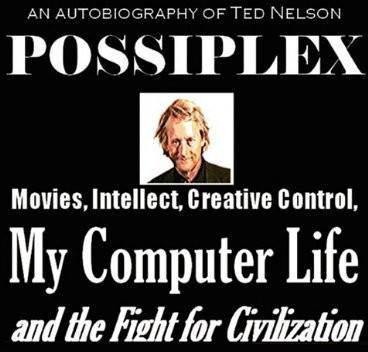
Possiplex
by
Ted Nelson
Published 2 Jan 2010
However, I found very few people I could talk to. I will not discuss here various writing projects I got into, or the wonderful help I got from Lauren Sarno, the former Resistor, who came and stayed with me awhile. (We were briefly engaged.) ''Soon we’ll be reading and writing on computer screens,' late 1980s (after HyperCard came out) In the early sixties I tried to tell everybody my vision-‘Soon we’ll be reading and writing on computer screens. 'And there'll be new forms of publication for the screen. ‘And you’ll be able to call up any document out of millions. 'And everyone will be able to publish in this new medium.
…
'And there'll be many new kinds of connection among them. ‘And you’ll be able to see every quotation in its original context. 'And you'll be able to quote without limit without permission. ‘And there’ll be an automatic royalty to each author for the part they wrote.' And in the late 1980s, after HyperCard came out, people I'd talked to earlier would say-- 'Oh, I get it, that's what you were talking about!' And I would say, "That’s part of it." === Fall 1985 (I was 48) Ralph’s Best Movie Ralph by now was retired in Santa Barbara. (His third wife, Barbara, had died after a long sad illness ) Ralph and I were speaking again, but it was hard., especially since he rarely spoke.
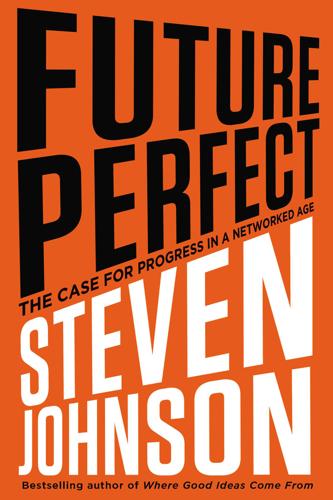
Future Perfect: The Case for Progress in a Networked Age
by
Steven Johnson
Published 14 Jul 2012
I made my monthly pilgrimages to College Hill because I was interested in the Mac, which was, it should be said, a niche interest in 1987, though not that much of a niche. Apple was one of the world’s largest creators of personal computers, and by far the most innovative. But if you wanted to find out news about the Mac—new machines from Apple, the latest word on the upcoming System 7 or HyperCard, or any new releases from the thousands of software developers or peripheral manufacturers—if you wanted to keep up with any of this, there was just about one channel available to you, as a college student in Providence, Rhode Island. You read Macworld. Even then, even if you staked out the College Hill Bookstore, waiting for issues hot off the press, you were still getting the news a month or two late, given the long lead times of a print magazine back then.
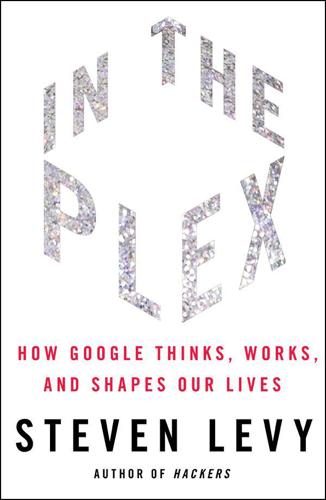
In the Plex: How Google Thinks, Works, and Shapes Our Lives
by
Steven Levy
Published 12 Apr 2011
Then came a detour to the brilliant but erratic work of an autodidact named Ted Nelson, whose ambitious Xanadu Project (though never completed) was a vision of disparate information linked by “hypertext” connections. Nelson’s work inspired Bill Atkinson, a software engineer who had been part of the original Macintosh team; in 1987 he came up with a link-based system called HyperCard, which he sold to Apple for $100,000 on the condition that the company give it away to all its users. But to really fulfill Vannevar Bush’s vision, you needed a huge system where people could freely post and link their documents. By the time Berners-Lee had his epiphany, that system was in place: the Internet.
…
.: and antitrust, 332–33, 366 and China, 284–87 and Internet access, 326–27 Cook, Scott, 80 copyrights: and Book Search, 352–54, 357–67 in China, 292 detecting violations of, 16, 174 evil violations of, 245, 367 law of, 353, 359, 360, 367 and lawsuits, 9–11, 328, 353, 358–62 and partner content, 264 safe harbor sites, 244 and YouTube, 244, 251, 261–62 Coughran, Bill, 301, 304, 310 Cowgill, Bo, 156 craigslist, 97, 239, 243 Credit Suisse, 148–49 Crosby, Wayne, 203 Crowley, Dennis, 373–74 Cruikshank, Lucas, 263–64 Cselle, Gabor, 240–41 Cui, Jin, 300 Cutts, Matt, 53–56, 58, 82, 155 Cyc, 47 D’Amato, Alfonse, 318 Danger, 213–14, 216 data: in the abstract, 19, 367 as basis of decision making, 3, 113, 161–62, 275, 319 compression of, 47, 100–101 payload, 343 public sources of, 341 data centers, 181–200, 256, 383 allocation of resources in, 202–3 basic requirements for, 191 cloud computing in, 181–200 expansion of, 182, 183, 250 and fiber ownership, 187–88 mapping the system in, 199 modular approach to, 189–90 power usage in, 189, 191, 194, 196–97, 211, 241 reducing information in, 199 redundancy in, 184 secrecy about, 181, 193 servers in, 181, 183, 187, 194 site selection in, 188–89, 191–94, 195–97 speed in, 184–87 Data Liberation Front, 354 data mining, 119, 180 data security laws, 343 Davidson, Alan, 329 Davies, Simon, 176 Dean, Jeffrey, 39, 43, 139 and advertising, 78, 102 and data centers, 197–200 and file system, 184 and MapReduce, 199–200 and web searches, 37–38, 42, 46–48 Design LLC, 191–93 Desimone, Josef, 134 Digital Equipment Corporation (DEC), 19–20, 22, 28, 37, 197 Digital Millennium Copyright Act, 244, 251 Diller, Barry, 322 DLB Associates, 190 dMarc Broadcasting, 250 Dodgeball, 373–74 Doerr, John, 73, 74, 79–80, 143, 145, 147, 162–63, 204–5 Dory, 131, 323 DotOrg, 257–58 DoubleClick, 330–36 Downey, Brandon, 269 Dream, 217–18, 220, 221 Drummond, David, 175, 176 and Book Search, 351–52, 354, 356, 360, 364 and China, 276, 304–5, 309, 311–12 and Congress, 332–33 and lawsuits, 328 and Obama, 315 and YouTube, 247, 249, 250, 252 Dureau, Vincent, 265 Durie, Daralyn J., 366–67 EarthLink, 95 eBay, 15, 113, 318 Edison, Thomas, 13 Edwards, Doug, 140 eGroups, 30 Elbaz, Gil, 103 Electronic Frontier Foundation, 337, 339 email, 161, 167–81 and ads, 102, 170–73, 177, 179, 180 and cloud computing, 180–81 Gmail, see Gmail and privacy, 170–78, 211, 378 and revenues, 170–73 and storage, 168–69, 172, 179–80 Emerald Sea, 382–83 employees: and austerity period, 256–57, 258–59 contract workers, 257, 269 first, 34, 36, 37 as Googley, 4, 36, 138–40, 158, 159, 162, 270, 309 numbers of, 5, 134, 158, 164, 373, 386 pampered, 58, 133–38, 259 promotions of, 260 recruitment/hiring of, 35–41, 72, 138–43, 258–59, 266, 386 and security issues, 269–70 70–20–10 balance, 162, 323 teamwork, 162 and 20 percent rule, 124 wealth of, 155–57, 259 Engelbart, Douglas, 15 Epstein, Scott, 76–77 Eustace, Alan, 145–46, 215, 271, 281, 289, 301, 303, 308 Ewing, Jessica, 174 Excite, 20, 27, 28–30, 136, 268 Facebook, 309, 322, 369–71, 373, 375–77, 379–80, 382–83 face recognition, 232 Farrell, Carrie, 139 Federal Communications Commission (FCC), 222, 223 Federal Trade Commission (FTC), 331–34, 379 Feiken, Jennifer, 242–43, 244–45 fiber optics, ownership of, 187–88, 198, 199, 261 Figueroa, Liz, 176–78 Filo, David, 28, 344 Fino, Audrey, 49–50, 52, 60 Fischer, David, 98 Fisher, Darin, 204 Flake, Gary, 98 Fleischer, Peter, 338–39 forecasting, 119–20 Foursquare, 374 Fred (video channel), 263–64 FriendFeed, 259, 370 Friendster, 371 Gaia password system, 308–9 Garcia-Molina, Hector, 14, 16, 17, 18, 23, 33 Gates, Bill, 14, 179, 204, 219, 278, 282, 283, 344, 381 GDrive, 205, 211 Gelernter, David, Mirror Worlds, 59–60 Genachowski, Julius, 322, 326 Ghemawat, Sanjay, 42, 43, 47, 100, 184, 197, 198–200 Gibson, William, 7 Gilbert, Judy, 257, 258, 259, 260 Gilbert, Roy, 272 GIMP, 31 Girouard, Dave, 180 Glazer, David, 375, 376 Gmail, 171–81, 322 and applications, 219, 227, 233, 236 as Caribou, 169–71 and cloud computing, 180–81 launch of, 161, 171–72, 206 and privacy, 170–78, 211 and security breach, 267–68 and social networking, 375, 377 and speed, 185 Goetz, Thomas, 254 Gomes, Ben, 40, 54, 58, 67–68, 100 Gonzalez, Steven, 283 Goodger, Ben, 204 Google: and access to all the world’s information, 6, 10, 58, 59, 63, 67, 75, 130, 146, 173, 198, 215, 219, 275, 335, 340, 342–43, 356, 363 ads of, see advertising and antitrust issues, 330, 331–34, 343–47, 364 APM program, 1–2, 3–5, 161–62, 259 and applications, 200–212, 239 austerity time of, 83, 86, 252–53, 255–57, 258–59, 265–66, 272, 376 BackRub renamed as, 30–31 business plan for, 72, 75, 77–78, 95, 115, 138, 152, 201 changing the world, 6, 34, 39, 52, 97, 120, 125, 126, 146, 316, 319, 329, 349, 365, 367, 369 cheap equipment bought for, 33, 129, 183–84, 189 Code Yellow in, 186 conference rooms of, 136–37 culture (Googley) of, 3, 36, 121–28, 129–42, 159, 186–87, 364, 365, 370, 385 design guidelines for, 129–30, 132, 206–7 development of, 32–34, 35–37, 45–57, 58 “Don’t be evil” motto of, 6, 11, 143, 144–46, 150, 170, 238, 276, 285, 286, 366–67, 384–85 employees, see employees engineers as top dogs in, 129, 130, 158, 160, 161, 323 failure and redundancy built into, 183–84, 189, 198, 211, 255, 372 filing for incorporation, 34 funding of, 32, 33–34, 72–75, 79, 129, 182 global scope of, 196–97, 270–72; see also China growth of, 3, 5, 6, 11, 43, 99, 127–28, 130, 131–32, 143, 164, 183, 198, 238–42, 253, 259, 271 headquarters of, 34, 36, 43, 125–26, 127–28, 130 home page of, 31, 184–85 IPO of, 2, 70, 94, 108, 134, 146–57 lawsuits against, 9–11, 56, 98, 150–51, 244, 328–29, 353, 358–67 as learning machine, 45, 47, 48, 65–68, 173, 216, 239, 383, 385 management structure, 74, 75–77, 79–82, 110, 143, 147, 157–66, 235, 254–55, 273, 373–74, 386–87 mission and vision of, 3, 6, 75, 97, 117, 124–25, 132, 169, 175, 215, 238, 363, 365 moral purity of, 6, 97, 268, 356, 360, 367 name of, 30–31, 180 no customer support from, 230–31, 376 1-800-GOOG-411 directory assistance, 219, 229 and politics, 317–19, 329–30 profitability of, 3, 69–71, 72, 77–78, 79, 99, 130, 256, 383, 386 public image of, 57, 74–75, 76, 77, 126, 144, 153–54, 173, 176, 237, 328–29, 337, 343, 364, 366, 383–84 secrecy in, 49, 52, 56–57, 69–70, 72–73, 83, 93, 106–7, 108, 146, 164–65, 191, 198, 218, 260, 261, 354, 357 security issues in, 267–70, 308–10, 313–14 shares in, 147–49, 155–57, 252 speed as focus of, 31, 37, 42, 52, 184–87, 206, 207, 208–9, 272, 372–73 TGIF meetings, 130–31, 166 20 percent rule, 124 user data amassed by, 45–48, 59, 84, 144, 173–74, 185, 333–36 user focus of, 5, 77, 241–42 values of, 6, 143–46, 147, 198, 256–58, 275–76, 300, 307, 310, 321, 323, 336, 343, 354, 364, 370, 384–85 war rooms of, 42–43, 45, 176, 186, 206, 309–10, 379, 380–81 and Yahoo, 44–45, 57, 151 and YouTube, 199, 242–52, 260–65 Google Analytics, 114–15, 205, 233, 234 Google Answers, 102 Google Book Search, 11, 347–67 Google Book Settlement, 362–67 Google Calendar, 233, 236 Google cars, 385, 386 Google Catalogs, 348 Google Checkout, 229, 242 Google China, see China Google Chrome, 208–12, 220, 221, 228, 319, 321, 354 “Google dance,” 56 Google Desktop, 205 Google Docs, 203, 210, 211 Google Earth, 239–40, 299, 340 Google Elections Team, 318, 321 Google Fellows, 49 Google Fiber for Communities, 327 Google File System, 184 Google Flu Trends, 258 Google Goes to the Movies, 265 Google Goggles, 232 Google Grants, 98 Google Help Forums, 231 Google Image Search, 382 Google Instant, 68 Google Latitude, 338–40, 374 Google Libraries, 357–58, 359 Google Maps, 219, 227, 240, 298–99, 318, 338, 340, 383 Google News, 58, 124, 239 Google.org, 241, 257 Google Pack, 205 Google Print, 356–57, 359 Google Product Client Group, 204 Google Product Strategy (GPS) meetings, 6, 135, 171 Google Quick Search Box, 78 Google Scholar, 58 Google Security Team, 267–70 Google settlement, 9–11 Google Street View, 340–43, 383, 384, 385 Google Suggest, 306–7 Google Talk, 233, 322, 375 Google Toolbar, 204–5, 233, 234 Google University, 136 Google Video, 242–47, 249, 261, 263, 429–30 Google Voice, 234, 236 Google Wave, 376–77, 379 Google Website Optimizer, 320 Google Zeitgeist, 46, 249, 253 googolplex, 31, 43 Gordon, Cathy, 195–96, 356, 359 Gore, Al, 177, 218, 237, 278, 352 GoTo, 87–89, 99, 102 Gphone, 218, 222, 226 GPS device, 229, 232, 338 Graham, Bill, 353 GrandCentral, 233–34, 236 Griffin, Denise, 130, 173–75, 231 Gross, Bill, 87–89, 95, 98, 102–3 Grove, Andy, 80, 163, 325 Gu, Xuemei, 290–92, 308, 312 Gundotra, Vic, 219–20, 232, 337, 377, 382–83 Gutenberg, Johannes, 347 Hackborn, Dianne, 217 Haiti, earthquake in, 325–26 Hamoui, Omar, 227 Hanke, John, 239 Harding, Matt, 243 Harik, Georges, 100–102, 105, 127, 139 Harvard University, 357, 358 Hassan, Scott, 17–18, 22, 28, 29, 30, 32 Haugen, Frances, 351 Heath, Taliver, 323 Heilemann, John, 356 Hendrix, Jimi, 76 Hertzfeld, Andy, 206 Hewlett-Packard, 37, 124, 181 Hölzle, Urs, 76, 100, 125, 162, 182, 257, 379 and cloud computing, 180 and data centers, 188–90, 194, 198 hired by Google, 36–37, 38 on speed, 185–87 Urs-Quake of, 381–82 Horowitz, Bradley, 211, 376–78, 379, 382 Horvath, Jane, 335, 338 HTC, 214, 226, 228, 230, 237 HTML 5, 212 Huber, Jeff, 116 Huffman, Scott, 61 Hulu, 260–61 Hurley, Chad, 243–44, 247–51, 260, 264 HyperCard, 15 hypertext connections, 15, 27 IBM, 24, 25–26, 63, 286 Idealab, 87–88, 99 indexing, 20, 21–22, 26, 41–43 checkpointing in, 43 comprehensiveness in, 52–53 in-RAM system, 43–44, 47–48 mirror worlds in, 60 updating, 45, 56 information retrieval (IR), 20, 22, 110, 239 Inktomi, 36, 44, 88, 290 innovator’s dilemma, 98–99 Intel, 163, 167, 218 intellectual property (IP), 88–89, 176, 221 Internet: bottom-up management of, 158 in China, 273, 279, 284, 285, 305, 308, 311, 313, 324 and cloud computing, 180–81 and copyright issues, 355, 367 disruptive platform of, 275 and Haiti earthquake, 325–26 net neutrality, 222, 383–84 and news, 239 open spectrum on, 15, 222–25, 329–30, 333, 334, 383–84 profitability of, 69–71 redefining commerce, 117 and social networking, 369–83 and user data, 334–36 values of, 322, 367 video, 242–52, 265 wireless service, 223 Internet Archive, 362 Ivester, Devin, 135, 141 Java, 17–18 JavaScript, 53, 105, 168, 169, 208, 209 Jen, Mark, 164–65 Jobs, Steve, 75, 80, 143, 209–10, 218–22, 237–38 Jones, Mike, 328, 340–42 JotSpot, 201 Joy, Bill, 28 Justice Department, U.S., 236, 331, 344–47, 364, 365–66 Kahle, Brewster, 362, 365 Kamangar, Salar, 71–72, 74, 233, 235 and advertising, 86, 89, 91–92, 109, 113 and business plan, 72, 75, 201 and Google motto, 143–44 and YouTube, 248, 260–65 Karen, Alana, 97–98 Karim, Jawed, 243, 247, 250 Kay, Erik, 207 Keyhole, 239–40, 340 Keyword Pricing Index, 118 Khosla, Vinod, 28, 29 Kim, Jini, 166 Klau, Rick, 312, 318 Kleinberg, Jon, 24–26, 34, 38, 292 Knol, 240 Knuth, Donald, 14 Kohl, Herb, 332 Koogle, Timothy, 44 Kordestani, Omid, 75–76, 78, 81, 96, 97, 130, 155, 242 Krane, David, 69–70, 143, 144–45, 150, 156 Kraus, Joe, 28, 136, 201, 374–75 Kundra, Vivek, 322, 326 Kurzweil, Raymond, 66 language, translations, 55, 62–65 Lantos, Tom, 285–87 Larson, Mark, 208 Leach, Jim, 286 Lee, Kai-Fu: and China office, 4, 281–83, 289–90, 291, 292, 293, 294, 296, 298, 302, 303, 305, 307–8, 313 departure of, 307–8, 312 Lee, Steve, 338–39 Lenat, Douglas, 47 Leonard, Herman, 117 Lessig, Lawrence, 359, 360, 363 Levick, Jeff, 96, 110–11, 112–13 Levinson, Arthur, 218, 237 Li, Mark, 293, 298–99 Li, Robin (Yanhong), 26–27, 278, 292, 293, 298 Library of Congress, 352, 361 Liebman, Jason, 103–5 LinkAds, 102–3 Linux, 78, 182, 210 Litvack, Sanford “Sandy,” 345, 347 Liu, John, 296 Liu, Jun, 294, 303–4 long-tail businesses, 85, 105, 107, 118, 243, 334 Lu, Qi, 380 Lucovsky, Mark, 283 Luk, Ben, 290, 302 Maarek, Yoelle, 272 MacDonald, Brian, 380 Macgillivray, Alex “AMac,” 353–55 machine learning, 64–66, 100–101, 385 Malone, Kim (Scott), 107–8, 135 Manber, Udi, 44, 45, 57–58, 68, 240, 355, 380 MapReduce, 199–200 Marconi International Fellowship Award, 278 Markoff, John, 193 Matias, Yossi, 272 Mayer, Marissa, 36, 41, 381 and advertising, 78–79 and APM program, 1, 4, 5, 161–62, 259 and books, 348–50, 358, 365 and Gmail, 170–71 and Google culture, 121, 122, 126–27, 141, 142, 163, 164, 365 and Google motto, 143–44 and Google’s look, 206–7 and management structure, 160, 235 and social networking, 371–73, 375 and stock price, 155, 156–57 McCaffrey, Cindy, 3, 76, 77, 145, 150, 153, 164 McCarthy, John, 127 McLaughlin, Andrew: and China, 276–79, 283–84, 303, 304 and Obama administration, 316, 321, 322–23, 325–26, 327 and privacy, 176–78, 379 memex, 15, 44 Merrill, Douglas, 183 Mi, James, 276 Microsoft: and antitrust issues, 331–32, 344–45 and aQuantive, 331 Bing search engine, 186, 380–81 and books, 361, 363 and browser wars, 206, 283 and China, 281, 282, 283, 284, 285, 304 and competition, 70, 191, 197, 200–212, 218, 220, 266, 282–83, 331, 344–47, 363, 380–81 and Danger, 214 data centers of, 190 and disclosure, 108 and email, 168, 169, 179–80 Excel, 200 and Facebook, 370 Hotmail, 30, 168, 172, 180, 209 IE 7, 209 Internet Explorer, 204–7 and mapping, 342 monopolies of, 200, 331–32, 364 Office, 200, 202, 203 Outlook, 169 PowerPoint, 200, 203 and user data, 335 and values, 144 WebTV, 217 Windows, 200, 210, 212, 219, 331 Windows Mobile, 220 Word, 200 and Yahoo, 343–44, 346, 380 of yesterday, 369 MIDAS (Mining Data at Stanford), 16 Milgrom, Paul, 90 Miner, Rich, 215, 216 Mobile Accord, 325 mobile phones, 214–17, 219–22, 251 Moderator, 323–24 Mohan, Neal, 332, 336 Monier, Louis, 19, 20, 37 Montessori, Maria, 121, 124, 166 Montessori schools, 121–25, 129, 138, 149 Moonves, Leslie, 246 Moore’s Law, 169, 180, 261 Morgan Stanley, 149, 157 Moritz, Mike, 32, 73–74, 80, 147, 247–48, 249 Morozov, Evgeny, 379 Morris, Doug, 261 Mossberg, Walt, 94 Mowani, Rajeev, 38 Mozilla Firefox, 204, 206, 207–8, 209 Murdoch, Rupert, 249, 370 MySpace, 243, 375 name detection system, 50–52 Napier’s constant, 149 National Federation of the Blind, 365–66 National Institute of Standards and Technology (NIST), 65 National Science Digital Library, 347 National Security Agency (NSA), 310 Native Client, 212 navigation, 229, 232, 338 Nelson, Ted, 15 net neutrality, 222, 326–27, 330, 383–84 Netscape, 30, 75, 78, 147, 204, 206 Nevill-Manning, Craig, 129 Newsweek, 2, 3, 20, 179 New York Public Library, 354, 357 Nexus One, 230, 231–32 95th Percentile Rule, 187 Nokia, 341, 374 Norman, Donald, 12, 106 Norvig, Peter, 47, 62, 63, 138, 142, 316 Novell, 70 Obama, Barack, 315–21, 322, 323–24, 329, 346 Obama administration, 320–28 Ocean, 350–55 Och, Franz, 63–65 Oh, Sunny, 283, 297, 298 OKR (Objectives and Key Results), 163–64, 165, 186, 209, 325 Open Book Alliance, 362 Open Handset Alliance, 221–22 OpenSocial, 375–76 operating systems, 210–12 optical character recognition (OCR), 53, 349–50 Oracle, 220 Orkut, 371–73, 375 Otellini, Paul, 218 Overture, 89, 90, 91, 95, 96, 98–99, 103, 150 Oxford University Press, 354, 357 Page, Larry, 3, 5 achievements of, 53, 383 and advertising, 84, 86–87, 90, 92, 94, 95–97, 114, 334, 336–37 ambition of, 12, 39, 73, 127–28, 139, 198, 215, 238, 362, 386–87 and applications, 205, 206, 207, 208, 210, 240–42, 340 and artificial intelligence, 62, 100, 246, 385–86 and BackRub/PageRank, 17, 18, 21–24, 26 and birth of Google, 31–34 and Book Search, 11, 347–52, 355, 357, 359, 361, 362, 364 on capturing all the web, 22–24, 52, 58, 63 on changing the world, 6, 13, 33, 39, 97, 120, 125, 146, 173, 232, 279, 316, 327, 361, 384–85 childhood and early years of, 11–13 and China, 267, 276, 277–78, 279–80, 283, 284, 305, 311 and data centers, 182–83 and eco-activism, 241 and email, 169–72, 174, 179 and Excite, 28–29 and funding, 32, 33–34, 73–75 and hiring practices, 139–40, 142, 182, 271, 386 imagination of, 14, 271 and IPO, 146–47, 149–54, 157 and machine learning, 66, 67 and management, 74, 75–77, 79–82, 110, 143, 158–60, 162–66, 228, 231, 235, 252–53, 254, 255, 260, 272, 273, 386–87 marriage of, 254 as Montessori kid, 121–25, 127–28, 149, 331, 387 and Obama, 315–16 and philanthropy, 257–58 and privacy, 174, 176–77, 337 and robots, 246, 385 and secrecy, 31–32, 70, 72–73, 106, 218 and smart phones, 214–16, 224, 225, 226–30, 234 and social networking, 372 and speed, 184–85, 207 and Stanford, 12–13, 14, 16–17, 28, 29, 34 and trust, 221, 237 values of, 127–28, 130, 132, 135, 139–40, 146, 196, 361, 364 and wealth, 157 and web links, 51 and YouTube, 248 PageRank, 3, 17, 18, 21–24, 27, 34, 38, 48–49, 53, 55, 56, 294 Palm, 216, 221 Park, Lori, 235, 258 Pashupathy, Kannan, 270–72, 277, 282 Passion Device, 230 Patel, Amit, 45–46, 82 and Google motto, 143–44, 146 patents, 27, 39, 89, 102, 221, 235, 237, 350 PayPal, 242, 243 peer-to-peer protocols, 234–35 Peters, Marybeth, 352 Phil, 99–103 Philip, Prince, 122 Picasa, 185–86, 187, 239 Pichai, Sundar, 205–6, 207–8, 209–12 Pichette, Patrick, 120, 150, 254–56 Pike, Rob, 241 Pittman, R.
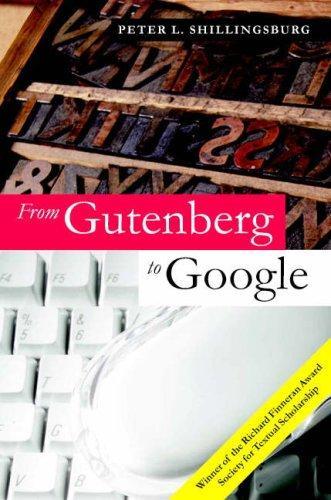
From Gutenberg to Google: electronic representations of literary texts
by
Peter L. Shillingsburg
Published 15 Jan 2006
A prototype edition of Marcus Clark’s His Natural Life using jitm, though still under construction, provides a sense of how this form of presentation gives flexibility to users.29 jitm is not without faults: the tools associated with jitm are in developmental stages, and are neither user friendly nor elegant. A users’ manual and help files were not yet ready in 2004. Interface design is inelegant and ‘‘clunky.’’ But jitm has the potential to address all these problems. More importantly, it currently functions on a MacIntosh (Apple) computer, and it operates within the HyperCard Software environment. This means that jitm is fully functional as a tool only in the Mac world though to viewers it is available with any browser on the Internet. Furthermore, perspectives generated by jitm are savable, portable, and browse-able html, sgml, or xml files. They can be displayed on any web-browser.

Wonderland: How Play Made the Modern World
by
Steven Johnson
Published 15 Nov 2016
A cluster of innovations emerges, all experimenting with different variations on a single theme, until one specific solution arises that reaches critical mass and kills off its rivals. Think of the ecosystem of computer networks in the early 1990s: proprietary services like AOL and CompuServe; file-sharing protocols like Fetch or Gopher; private bulletin-board communities like The WELL or ECHO; hypertext experiments like Storyspace or HyperCard. Behind all these marginal new platforms, a shared consensus was visible: people were going to start consuming and sharing news, documents, personal information, and other media through hypertextual networks. But it was unclear whether a single platform would unite all these disparate activities, until the World Wide Web became the de facto standard in the mid-1990s.
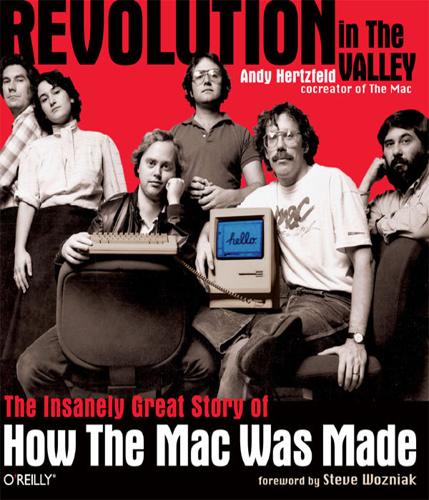
Revolution in the Valley: The Insanely Great Story of How the Mac Was Made
by
Andy Hertzfeld
Published 19 Nov 2011
Cast of Characters Bill Atkinson Jef Raskin recruited Bill to work for Apple in the spring of 1978. His work on the QuickDraw graphics package was the foundation of both the Lisa and the Macintosh user interfaces. Later, he single-handedly wrote MacPaint, the first great application for the Macintosh, followed by HyperCard in 1987. He co-founded General Magic in 1990 to develop personal intelligent communicators. Since 1996, he’s been a full-time nature photographer and has recently published a beautiful book of mineral photographs titled Within the Stone. Bob Belleville After a stint at Xerox where he was one of the main hardware designers of the Xerox Star, Bob joined the Mac team in May 1982 as the software manager.
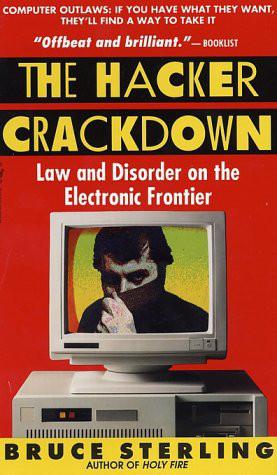
The Hacker Crackdown
by
Bruce Sterling
Published 15 Mar 1992
In 1991, the Well's list of conferences looked like this: CONFERENCES ON THE WELL WELL "Screenzine" Digest (g zine) Best of the WELL - vintage material - (g best) Index listing of new topics in all conferences - (g newtops) Business - Education ---------------------- Apple Library Users Group(g alug) Agriculture (g agri) Brainstorming (g brain) Classifieds (g cla) Computer Journalism (g cj) Consultants (g consult) Consumers (g cons) Design (g design) Desktop Publishing (g desk) Disability (g disability) Education (g ed) Energy (g energy91) Entrepreneurs (g entre) Homeowners (g home) Indexing (g indexing) Investments (g invest) Kids91 (g kids) Legal (g legal) One Person Business (g one) Periodical/newsletter (g per) Telecomm Law (g tcl) The Future (g fut) Translators (g trans) Travel (g tra) Work (g work) Electronic Frontier Foundation (g eff) Computers, Freedom & Privacy (g cfp) Computer Professionals for Social Responsibility (g cpsr) Social - Political - Humanities --------------------------------- Aging (g gray) AIDS (g aids) Amnesty International (g amnesty) Archives (g arc) Berkeley (g berk) Buddhist (g wonderland) Christian (g cross) Couples (g couples) Current Events (g curr) Dreams (g dream) Drugs (g dru) East Coast (g east) Emotional Health@@@@ (g private) Erotica (g eros) Environment (g env) Firearms (g firearms) First Amendment (g first) Fringes of Reason (g fringes) Gay (g gay) Gay (Private)# (g gaypriv) Geography (g geo) German (g german) Gulf War (g gulf) Hawaii (g aloha) Health (g heal) History (g hist) Holistic (g holi) Interview (g inter) Italian (g ital) Jewish (g jew) Liberty (g liberty) Mind (g mind) Miscellaneous (g misc) Men on the WELL@@ (g mow) Network Integration (g origin) Nonprofits (g non) North Bay (g north) Northwest (g nw) Pacific Rim (g pacrim) Parenting (g par) Peace (g pea) Peninsula (g pen) Poetry (g poetry) Philosophy (g phi) Politics (g pol) Psychology (g psy) Psychotherapy (g therapy) Recovery## (g recovery) San Francisco (g sanfran) Scams (g scam) Sexuality (g sex) Singles (g singles) Southern (g south) Spanish (g spanish) Spirituality (g spirit) Tibet (g tibet) Transportation (g transport) True Confessions (g tru) Unclear (g unclear) WELL Writer's Workshop@@@(g www) Whole Earth (g we) Women on the WELL@(g wow) Words (g words) Writers (g wri) @@@@Private Conference - mail wooly for entry @@@Private conference - mail sonia for entry @@Private conference - mail flash for entry @ Private conference - mail reva for entry # Private Conference - mail hudu for entry ## Private Conference - mail dhawk for entry Arts - Recreation - Entertainment ----------------------------------- ArtCom Electronic Net (g acen) Audio-Videophilia (g aud) Bicycles (g bike) Bay Area Tonight@@(g bat) Boating (g wet) Books (g books) CD's (g cd) Comics (g comics) Cooking (g cook) Flying (g flying) Fun (g fun) Games (g games) Gardening (g gard) Kids (g kids) Nightowls@ (g owl) Jokes (g jokes) MIDI (g midi) Movies (g movies) Motorcycling (g ride) Motoring (g car) Music (g mus) On Stage (g onstage) Pets (g pets) Radio (g rad) Restaurant (g rest) Science Fiction (g sf) Sports (g spo) Star Trek (g trek) Television (g tv) Theater (g theater) Weird (g weird) Zines/Factsheet Five(g f5) @Open from midnight to 6am @@Updated daily Grateful Dead ------------- Grateful Dead (g gd) Deadplan@ (g dp) Deadlit (g deadlit) Feedback (g feedback) GD Hour (g gdh) Tapes (g tapes) Tickets (g tix) Tours (g tours) @Private conference - mail tnf for entry Computers ----------- AI/Forth/Realtime (g realtime) Amiga (g amiga) Apple (g app) Computer Books (g cbook) Art & Graphics (g gra) Hacking (g hack) HyperCard (g hype) IBM PC (g ibm) LANs (g lan) Laptop (g lap) Macintosh (g mac) Mactech (g mactech) Microtimes (g microx) Muchomedia (g mucho) NeXt (g next) OS/2 (g os2) Printers (g print) Programmer's Net (g net) Siggraph (g siggraph) Software Design (g sdc) Software/Programming (g software) Software Support (g ssc) Unix (g unix) Windows (g windows) Word Processing (g word) Technical - Communications ---------------------------- Bioinfo (g bioinfo) Info (g boing) Media (g media) NAPLPS (g naplps) Netweaver (g netweaver) Networld (g networld) Packet Radio (g packet) Photography (g pho) Radio (g rad) Science (g science) Technical Writers (g tec) Telecommunications(g tele) Usenet (g usenet) Video (g vid) Virtual Reality (g vr) The WELL Itself --------------- Deeper (g deeper) Entry (g ent) General (g gentech) Help (g help) Hosts (g hosts) Policy (g policy) System News (g news) Test (g test) The list itself is dazzling, bringing to the untutored eye a dizzying impression of a bizarre milieu of mountain-climbing Hawaiian holistic photographers trading true-life confessions with bisexual word-processing Tibetans.
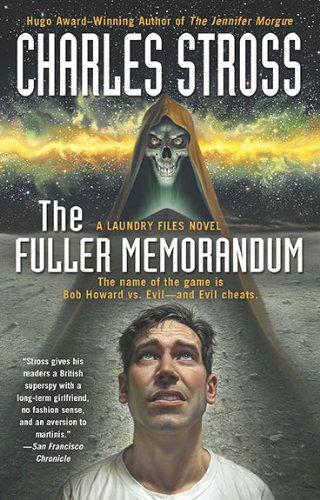
Fuller Memorandum
by
Stross, Charles
Published 14 Jan 2010
It's an important piece of the history of computing, leaked to the public as a think-piece commissioned by the Atlantic Weekly in 1945; most of the readers thought it was a gosh-wow-by-damn good idea, but were unlikely to realize that a number of the things had actually been built, using a slush fund earmarked for the Manhattan Project. The product of electromechanical engineering at its finest, not to mention its most horrendously complex, each Memex cost as much as a B-29 bomber--and contained six times as many moving parts, most of them assembled by watchmakers. It wasn't until HyperCard showed up on the Apple Mac in 1987 that anything like it reached the general public. I believe Angleton's Memex is the only one that is still working, much less in day-to-day use, and to say it takes black magic to keep it running would be no exaggeration. I approach the seat with considerable caution, and not just because I'm absolutely certain he will have taken steps to ensure that anyone who sits in it without his approval and pushes the big red on button will never push another button in their (admittedly short) life; he knows how to use the thing, but if I crash it or break the cylinder head gasket or something and he comes back, the only shoes I'd be safe in would be a pair of NASA-issue moon boots (and maybe not even then).
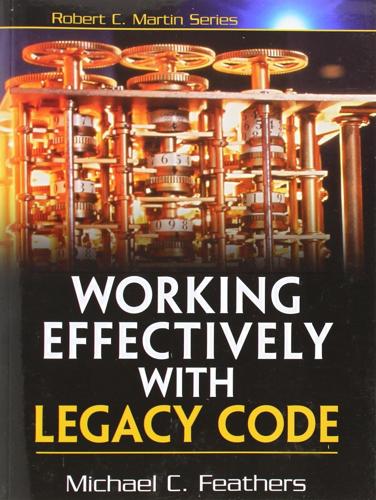
Working Effectively With Legacy Code
by
Michael Feathers
Published 14 Jul 2004
Frankly, every day people new to the industry confront these issues when they encounter object-oriented code for the first time. In the 1980s, Ward Cunningham and Kent Beck were dealing with this issue. They were trying to help people start to think about design in terms of objects. At the time, Ward was using a tool named Hypercard, which allows you to create cards on a computer display and form links among them. Suddenly, the insight was there. Why not use real index cards to represent classes? It would make them tangible and easy to discuss. Should we talk about the Transaction class? Sure, here is its card—on it we have its responsibilities and collaborators.

Dreaming in Code: Two Dozen Programmers, Three Years, 4,732 Bugs, and One Quest for Transcendent Software
by
Scott Rosenberg
Published 2 Jan 2006
There is no reliable relationship between the volume of code produced and the state of completion of a program, its quality, or its ultimate value to a user. Andy Hertzfeld tells a relevant tale from the early days at Apple about his mentor Bill Atkinson, a legendary software innovator who created Quickdraw and Hypercard. Atkinson was responsible for the graphic interface of Apple’s Lisa computer (a predecessor of the Macintosh). When the Lisa team’s managers instituted a system under which engineers were expected to fill out a form at the end of each week reporting how many lines of code they had written, Atkinson bridled.
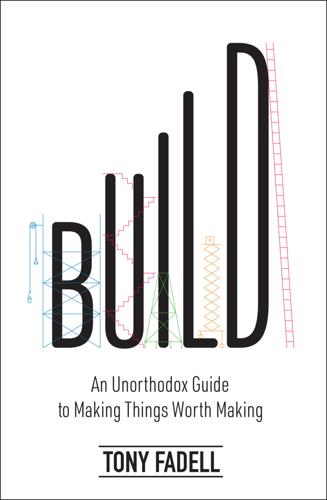
Build: An Unorthodox Guide to Making Things Worth Making
by
Tony Fadell
Published 2 May 2022
Those (typically humble) rock stars will lead you to the career you want. * * * If there are gods of software design and coding, they are Bill Atkinson and Andy Hertzfeld. Their faces were in the magazines I’d read religiously cover to cover since grade school. I’d used everything they’d ever built—the revolutionary Mac, MacPaint, Hypercard, the Lisa. They were my heroes. When I met them, I felt like I was meeting the president. The Beatles. Led Zeppelin. My palms were sweating when I shook their hands; I could barely catch my breath. But after time passed and I blinked the stars out of my eyes, I realized they were approachable, easy to talk to—a rare trait in the world of geniuses.
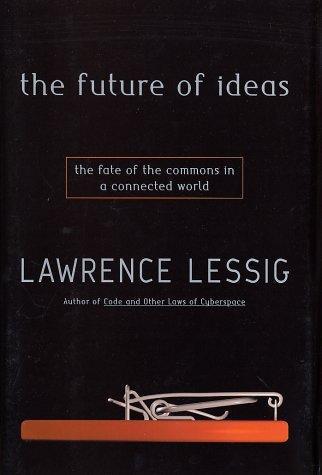
The Future of Ideas: The Fate of the Commons in a Connected World
by
Lawrence Lessig
Published 14 Jul 2001
His ideal was a space where any document in principle could be linked to any other and where any document published was available to anyone. The components of this vision were nothing new. Hypertext—links from one document to another—had been born with Vannevar Bush,50 and made famous by Bill Atkinson's HyperCard on the Apple Macintosh. The world where documents could all link to each other was the vision of Robert Fano in an early article in the Proceedings of the IEEE. 51 But Berners-Lee put these ideas together using the underlying protocol of the Internet. Hyperlinked documents would thus be available to anyone with access to the Internet, and any document published according to the protocols of the World Wide Web would be available to all.
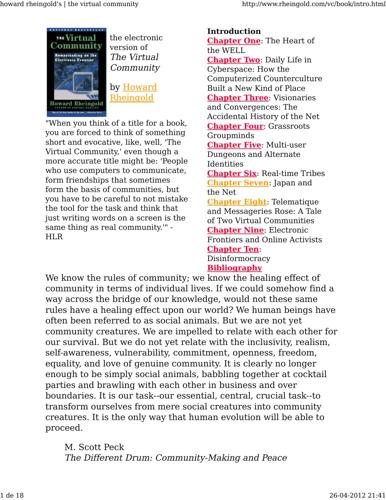
Howard Rheingold
by
The Virtual Community Homesteading on the Electronic Frontier-Perseus Books (1993)
Published 26 Apr 2012
(g spud) Comics (g comics) Restaurants (g rest) Fun (g fun) Star Trek (g trek) Jokes (g jokes) Television (g tv) EDUCATION AND PLANNING ---------- Apple Library Environment (g environ) Users (g alug) Earthquake (g quake) Brainstorming (g brain) Homeowners (g home) Biosphere II (g bio2) Indexing (g indexing) Co-Housing (g coho) Network Design (g design) Integrations (g origin) Education (g ed) Science (g science) Energy (g power) Transportation (g transport) 26-04-2012 21:42 howard rheingold's | the virtual community 9 de 27 http://www.rheingold.com/vc/book/2.html Whole Earth (g we) Review GRATEFUL DEAD ---------- Grateful Dead (g gd) Tapes (g tapes) Deadlit (g deadlit) Tickets (g tix) GD Hour (g gdh) Tours (g tours) Feedback (g feedback) Tours (g tours) COMPUTERS AI/Forth /Realtime (g real Mac System7 (g mac7) -time) MIDI (g midi) Amiga (g amiga) NAPLPS (g naplps) Apple (g apple) NeXt (g next) Arts and Graphics (g gra) OS/2 (g os2) Computer Books (g cbook) Printers (g print) CP/M (g cpm) Programmer's (g net) Desktop (g desk) Net Publishing Scientific (g scicomp) Hacking (g hack) computing Hypercard (g hype) Software IBM PC (g ibm) Design Internet (g inter- Software/ (g soft- net) Programming ware) LANs (g lan) Software (g ssc) Laptop (g lap) Support Macintosh (g mac) Unix (g unix) Mactech (g mactech) (g mactech) Virtual (g vr) Mac Network Admin (g macadm) Reality (g sdc) Windows (g windows) Word (g word) Processing THE WELL ITSELF ---------- Deeper technical (g deeper) Hosts (g host) Policy (g policy) (g meta- System News (g sysnews) well) Test (g test) General technical (g gentech) Public (g public) WELLcome and help (g well) programmers (g public) view MetaWELL 26-04-2012 21:42 howard rheingold's | the virtual community 10 de 27 http://www.rheingold.com/vc/book/2.html Virtual (g vc) Communities (g vc) SOME POPULAR PRIVATE CONFERENCES ON THE WELL Mail the hosts listed for information on their criteria for admission.

Whole Earth: The Many Lives of Stewart Brand
by
John Markoff
Published 22 Mar 2022
Although he had left the Whole Earth Software Catalog behind, he remained immersed in the computing world. Apple had struck a deal with the Point Foundation to develop a CD-ROM version of the Whole Earth Catalog. Apple financed the development of the project, which began in earnest in July 1987, based on its HyperCard technology, an early effort to implement the hypertext ideas of Engelbart and Ted Nelson, an iconoclastic computer philosopher who was Brand’s neighbor on the South 40 Dock—ideas that would eventually lead to the World Wide Web. The digitized Catalog was delivered to personal computer users via then brand-new CD-ROM optical disk technology.
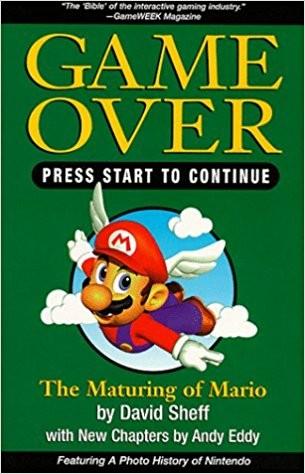
Game Over Press Start to Continue
by
David Sheff
and
Andy Eddy
Published 1 Jan 1993
Takeda’s gang tackled the limits with new kinds of chips called MMCs (Memory Map Controllers). They made the system do things that the Famicom’s 8-bit processor could never have approached on its own. Years after the Famicom was introduced, games seemed to get more and more complex. It was as if the old Apple II were suddenly powering Hypercard. Takeda’s chips, by taking on some of the Famicom’s processing power, essentially added RAM and other specific powers to the machine. The Famicom could do things it was never designed to do: images could scroll diagonally, objects could move quicker, and far more could happen at one time. The system itself still had only 2 kilobytes of RAM, but this was supplemented by the custom-designed sets of circuits with specialized functions in the MMCs.

Coders: The Making of a New Tribe and the Remaking of the World
by
Clive Thompson
Published 26 Mar 2019
Women coders get mistaken as PR lightweights. Black and Latino programmers also get mistaken for security or housekeeping. That’s one of the things that happened to Erica Baker, a build-release engineer for Slack when I met her in 2017. Baker had grown up as a nerdy African American kid teaching herself QBasic and Hypercard, and eventually wound up working for Google in Atlanta. She faced some racist comments: She had a coworker who said “Does your boyfriend beat you?” she recalls. She eventually moved to Google’s Mountain View office, where at one point a temp mistook her for security, and another employee mistook her for an administrative assistant.
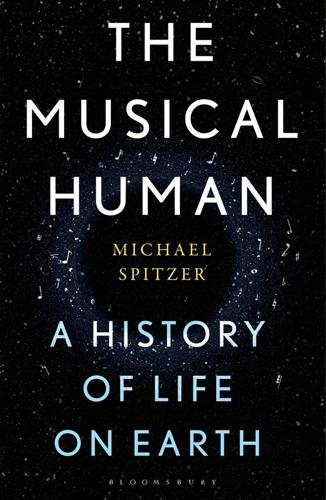
The Musical Human: A History of Life on Earth
by
Michael Spitzer
Published 31 Mar 2021
See Daniel Levitin, Parag Chordia and Vinod Menon, ‘Musical rhythm spectra from Bach to Joplin obey a 1/f power law’, Proceedings of the National Academy of Sciences of the United States of America 109/10 (2011), pp. 3716–20 (p. 3716). 60Martin Gardner, ‘White, Brown, and Fractal Music’, in his Fractal Music, Hypercards and More Mathematical Recreations from SCIENTIFIC AMERICAN Magazine (New York: W. H. Freeman and Company, 1992), pp. 1–23. 61Philip Ball, Patterns in Nature: Why the Natural World Looks the Way it Does (Chicago: The University of Chicago Press, 2016). 62Gabriel Pareyon, On Musical Self-Similarity: Intersemiosis as Synecdoche and Analogy (Imatra: International Semiotics Institute, 2011). 63Benjamin Ayotte and Benjamin McKay Ayotte, Heinrich Schenker: A Guide to Research (London: Routledge, 2004). 64Arnold Schoenberg, The Musical Idea and the Logic, Technique and Art of Its Presentation (Bloomington: Indiana University Press, 2006). 65For example Rolf Bader, ‘Fractal dimension analysis of complexity in Ligeti’s piano pieces’, The Journal of the Acoustical Society of America 117/4 (2005), p. 2477. 66Fernández and Vico, ‘AI Methods in Algorithmic Composition’, p. 557. 67https://www.samwoolfe.com/2014/03/could-universe-be-fractal.html Chapter 12 1Yuk Hui, Recursivity and Contingency (Lanham, Maryland: Rowman & Littlefield International, 2019). 2As I mentioned in Chapter 1, Ernst Haeckel’s discredited theory that ontogeny ‘recapitulates’ phylogeny, that the gestation of the human embryo echoes the stages of evolution, has sprung back to life in the most recent work in the psychology of musical emotion.
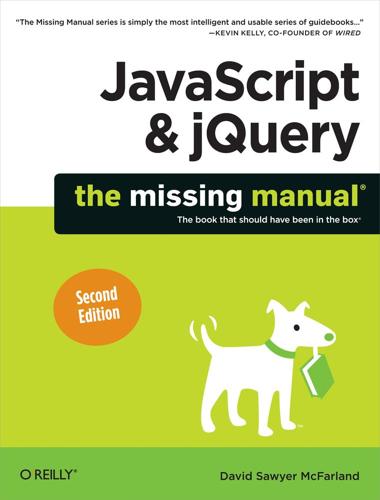
JavaScript & jQuery: The Missing Manual
by
David Sawyer McFarland
Published 28 Oct 2011
He welcomes feedback about this book by email: missing@sawmac.com. (If you’re seeking technical help, however, please refer to the sources listed in Appendix A.) About the Creative Team Nan Barber (editor) has worked with the Missing Manual series since its inception—long enough to remember HyperCard stacks. Holly Bauer (production editor) lives in Ye Olde Cambridge, MA. She’s a production editor by day and an avid home cook, prolific DIYer, and mid-century modern design enthusiast by evening/weekend. Email: holly@oreilly.com. Carla Spoon (proofreader) is a freelance writer and copy editor.
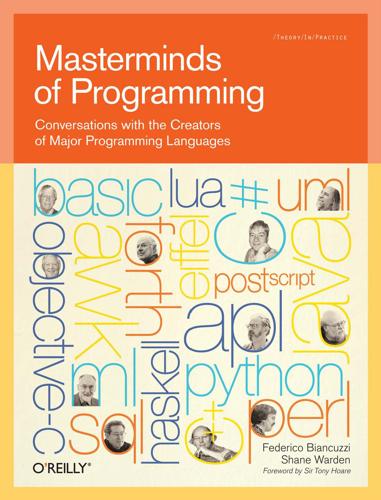
Masterminds of Programming: Conversations With the Creators of Major Programming Languages
by
Federico Biancuzzi
and
Shane Warden
Published 21 Mar 2009
You can run at that higher level in terms of how you describe what you want to produce and only bind it at the last moment to a specific device. Interfaces to Longevity How can a designer think about longevity for a general programming language? Are there specific steps to take? John: A lot of languages go after a specific problem. Remember the one Atkinson did, HyperCard. He made what I would believe is the most common mistake that people make and that’s not to make it a full programming language. You have to have control, you have to have branching, you have to have looping, you have to have all the mathematics and everything that makes up a full programming language or else you’ll hit a brick wall at some point in the future.
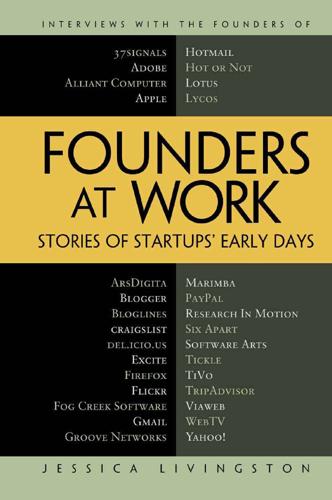
Founders at Work: Stories of Startups' Early Days
by
Jessica Livingston
Published 14 Aug 2008
Livingston: Was there a cold call that you made that turned out to be pivotal? Kraus: No, the pivotal things were all unintentional. Like the way we got turned on to the Web: it was about ’94 and we were deciding between two technologies for the interface. How do you present search technology to the user if it’s not a command line? One was HyperCard and the other was this Web thing. And Graham, wisely, chose the Web. I believe it was because of that particular chance moment that we ended up being web-oriented and got known as a web search thing. The intentional things were rarely pivotal in those early days, but the being persistent, following-your-nose thing made a big difference.